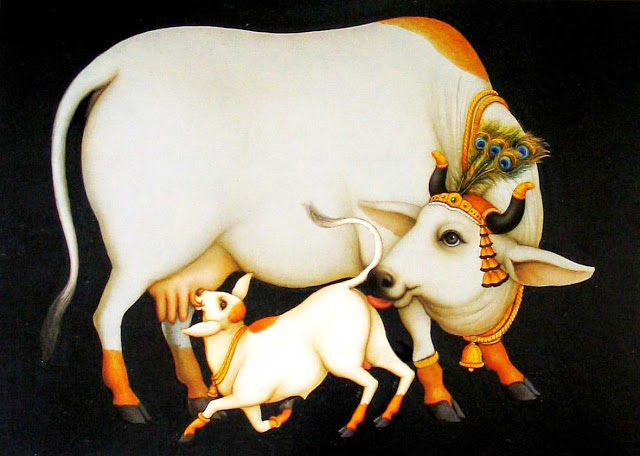The post Ayodhya, Sri Rama and Us appeared first on Dharma Today.
]]>The beauteous descriptions of Ayodhya in the pages of Sri Valmiki Ramayana, surpass just the external charm of a vibrant city; Valmiki Rishi speaks in great detail of the inner beauty of the citizens and rulers. For example, one of Dasaratha Maharaj’s ministers, the great Jabali, states, “ yajnasva, dehi, diskhasva, tapstpyasva, santajya” or “perform yagna (atma samarpana), give charity, take diksha (resolve for some regular sadhana), do tapasya and have dedication”. (Ayodhya kanda 108-16) Therefore, followers of Sanatana Dharma hope to see that the Sri Rama Janmabhumi temple will spread not only the glories of the external temple, but the real culture of Ayodhya outside the borders of Ayodhya, to all over Bharata, and beyond.
Sri Rama and Sri Krishna are the heartbeat of every Indian – even if some heartbeats beat on a rhythm of hate, most follow a tempo of love and affection. Let the heartbeat of every Indian pulse with positivity for the emergence of this long overdue temple; let everyone study Sri Ramayana for enlightenment, entertainment and transformation of their physical and spiritual realities.
Ayodhya literally translates to, “the place which cannot be fought”, or “invincible”. Thus it is certain that the physical geographical location of Ayodhya will emerge evermore glorious, yet we should also remember that the spiritual “Ayodhya” in the hearts of those that place Sri Rama as their ruler, also has to grow much deeper. The light of Sri Rama glowing deep within everyone’s spirit, signifies His coming back from vanvas to celebrate Deepavali. That lamp is in the form of the awakened heart that makes a conscious effort to practice the essential five principle policy of Ayodhya – atma samarpana, dehi, diskhasva, tapstpyasva, and santajya.
Let us joyfully celebrate the ground breaking ceremony for the emerging temple in Ayodhya, while also sincerely resolving to celebrate the vital teachings of our beloved Sri Rama so that the real Rama Rajya can be established in everyone’s heart.
Jai SitaRama!!
Jai Ayodhya!!
The post Ayodhya, Sri Rama and Us appeared first on Dharma Today.
]]>The post A Sanatani Atheist: In Search of My Freedom of Expression appeared first on Dharma Today.
]]>You were born in a Muslim family. Did you grow up in a Muslim society? How did you develop early doubts about religion and God?
I spent the first 21 years of my life in Riyadh, Saudi Arabia. In my childhood, my recital of Quranic Surahs earned me praises from the teachers at the Madrassa where I was taught. When I grew up a bit and still in school, I was confused to reconcile the Quran with the world of reason. It was said that Allah causes rain through his angel Mikail depending on human needs. If so, I questioned, why don’t we ever see any rainfall in the Sahara desert? The scientific theory of the water cycle looks much more promising rather than the Quranic theory, isn’t it?
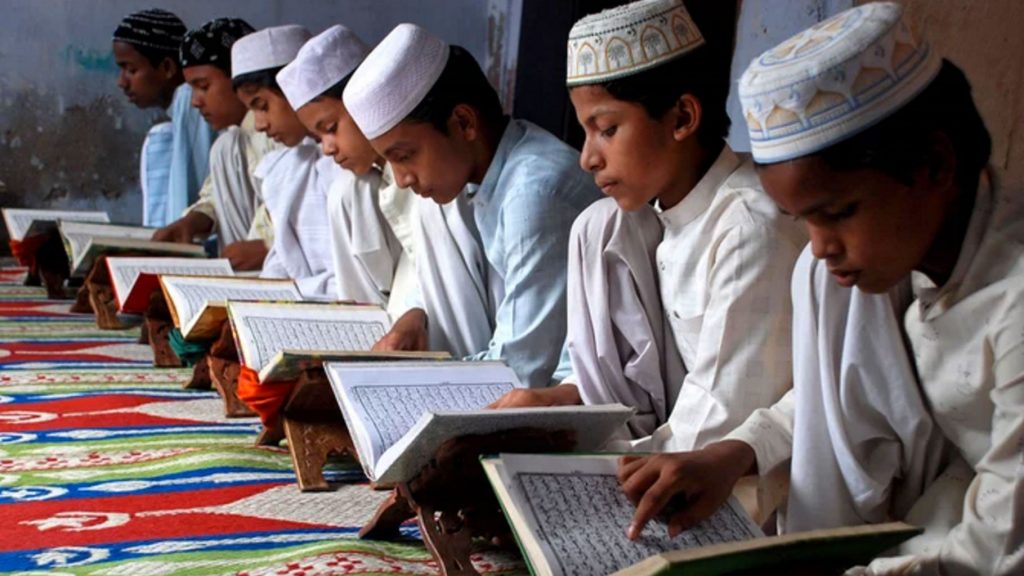
What was the reaction of your teachers?
The Maulanas could not answer these questions of mine but got furious and condemned me as Kaffir. I wasn’t discouraged by it. It pushed me towards studying more deeply on these topics.
How did your parents and the society at large react to your scepticism?
I asked my mother flatly if she considered the Quranic description of her being a place of husband’s sowing of seed (the Quran 2:223) disrespectful. She was unhappy with me for questioning Allah.
Should God not reward good deeds like work of Mother Teresa for the downtrodden, instead of observing who is praying to Him and who is not? Why should He be bothered about such petty-minded notions? I did not restrict myself from these discussions at my workplace at Medina and was fast becoming persona non grata. I was not a complete disbeliever back then but merely a sceptic. When words were out in the air that I would be fired from my job, I even used to pray to Allah, “O Allah! Let me not get fired from my job. I am only asking for my just right of earning by my hard work.” How innocent was I back then!
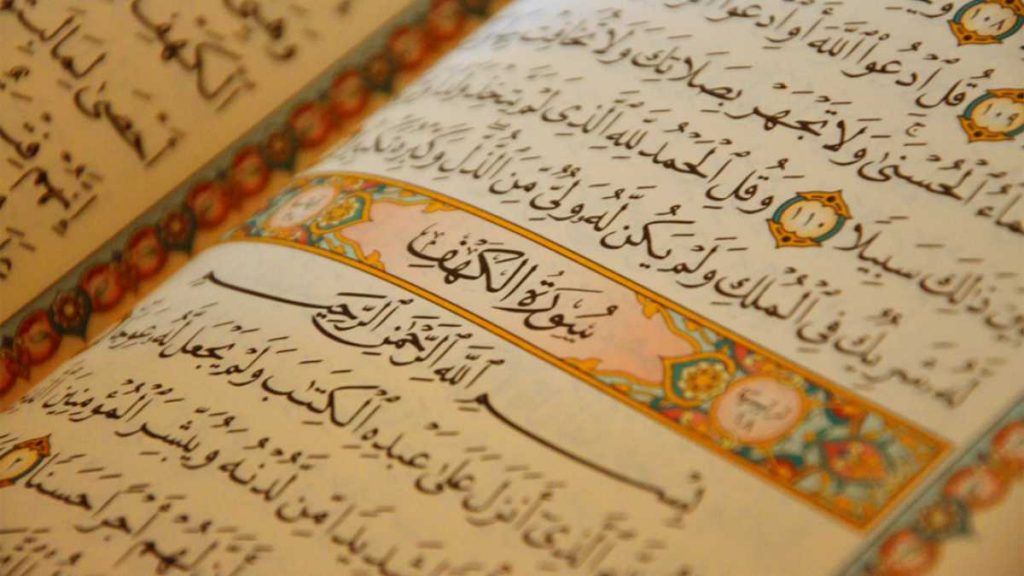
Were you then fired? What happened to your skepticism after then?
I was fired within a few days. The rumours were correct. After being fired, the skeptic in me became firmly an unbeliever!
You are one of the famous atheist bloggers of Bangladesh ,consistently and systematically being targeted by the Muslim Fundamentalists. How did it start? What made you an activist of Atheism?
From Riyadh, I came back to Dhaka, Bangladesh and got married to my cousin. I was in my early twenties that time. By then, I completed my Bachelor’s degree in computer science. I also have my proficiency in graphics designing and making cartoons. On account of my skills, I found a coveted employment in Central Depository of Bangladesh Limited. I fathered a son a year after my marriage. I became a full-fledged family man. The life was, then, rather smooth for me.
I started posting couplets on different themes in social media and was becoming popular. One of my couplets was that Creator and a creative mind, both, love listening to own praises. Controversy erupted when Muslims challenged me on the Creator part of this couplet. I pointed out to the text of the namaz, that is the first Surah of Al-Fatiah from the Quran and it is no different than an explicit flattery of Allah. I also highlighted that it was made mandatory by Allah Himself for Muslims to recite this namaz five times daily.
My writing eventually appeared as a book entitled Nāstika which made me famous; though now I see that book rather amateurish. I also made an exhibition on graphical art on the theme Cogito ergo sum (I think; therefore I exist). In the newspaper called the Daily Star, the exhibition received critical acclamation. This was also not liked by the Muslim fundamentalists.
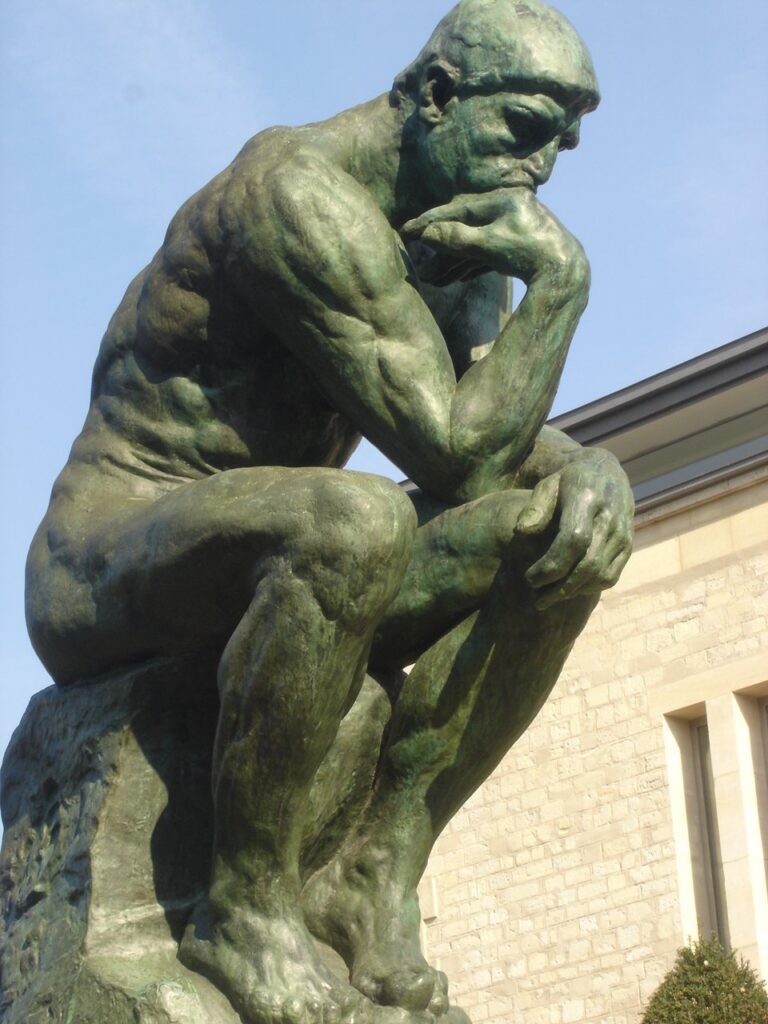
It was no less than a dare to publish this book Nāstika and also some other books under my real name and with my photo in Bangladesh. I was welcomed into the budding rationalist atheist movement of Bangladesh and got connected to intellectual luminaries like Asif Mohiuddin, Ahmed Rajib Haider, Avijit Roy and Prabir Ghosh. I was an organizer for the organization Science and Rationalist Association of Bangladesh, in short Sraban. We used to make fun of astrologers and miracle healers. I developed deep friendship with persons like Niloy Neel and Tasib Hassan. Tassib is absconding right now from the Muslim fundamentalists. Niloy already left all of us….
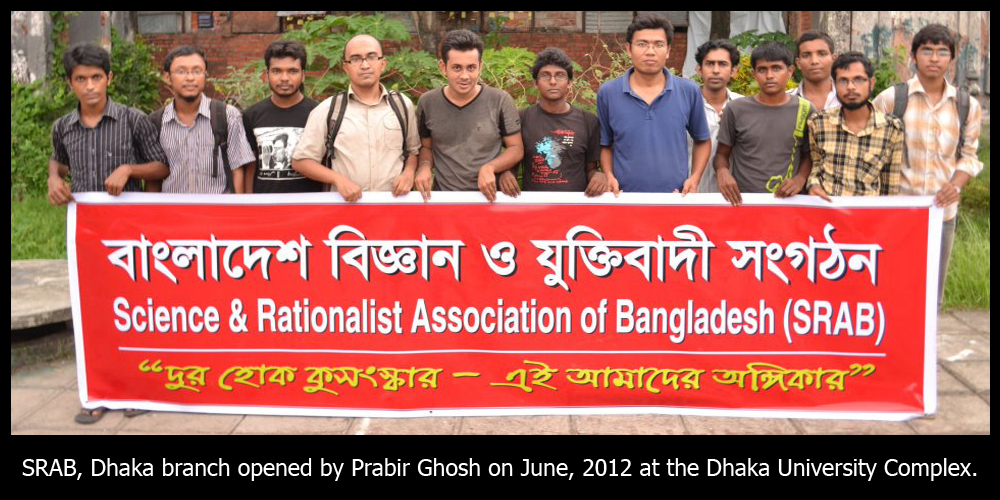
What was the agenda for your activism? What was the main message you were highlighting to the people of Bangladesh?
The people of Bangladesh took a stand to assert their Bengali identity in 1971 during their War of Liberation against Pakistan and opposed the imperial imposition of Urdu. The Pakistani authorities were openly communal. Yahya khan, the then president of Pakistan, instructed his soldiers to rape the Bengali Hindu women to impregnate them all with Muslim children only. The inglorious organisation Jamaat–e–Islami Bangladesh and its leaders like Ghulam Azam and Salahuddin Quader Chowdhury were in cahoot with the Pakistani oppressors.
Yet, after the assassination of Sheikh Mujibar Rahman in 1975, the historical course took an unwarranted new turn. Ziaur Rahman as premier, offered succor to Jamaat–e–Islami Bangladesh, once again. The history was distorted in suppressing the role of Islamist Rājākārs and their anti-national acts during the Liberation War. Education was gradually taken over by the Muslim fundamentalists with increasing Arabisation of Bengali language and expulsion of Hindu authors from the school textbook. The sapling Ziaur planted, has grown into the poison tree over the last four decades. Now, Bangladeshis largely sympathise with Pakistan, their once oppressor, and mostly hate India, their liberator. It became a Muslim country falling from its secular ideals. I was becoming aware about the true history of my nation this time and also became aware of pervasive distortions regarding historical facts.
We were also participating in philanthropic activities and protesting the targeted heart-rending atrocities against the minorities (the Hindus) of Bangladesh. As a typical case, take a Hindu family consisting of a widowed mother and an adolescent daughter of 13 years old. Seven hooligans came at night—two were raping the mother and the other five together gang-raping the daughter. The mother, while being raped, was begging to those rapists to not rape her daughter all together but one by one as she is too young for such an assault. We highlighted these beastly atrocities which generally receive support from the Muslim fundamentalists.
How did such so-called religious people justify their barbarism?
The agenda of the Muslim fundamentalists is to define any opponent as Kaafir and then remove all such kaffirs from Bangladesh. Encouraging hooligans to persecute the Hindus is a strategy for them to create a kaffir-less Bangladesh. And, their strategy is winning as well. The falling population share of Hindus and Buddhists of Bangladesh over time, from close to 30% of the population to less than 10% today, is a fact.
You were associated with the now-legendary Shahbag movement. Was it this time when this movement was born? How was the movement born?
On the fifth day of February, 2013, we, more precisely only 26 of us, started a non-violent movement to highlight the issues with Rājākārs. I wrote and published a book that time exposing the Rājākārs, entitled Rājākārer Keertikalāp (“Glorious” Deeds of the Rajakars). We were using our artistic talents to attract public attention. In the first day, we were ridiculed and laughed at. But soon, we received considerable public attention. The Ekushey Book Fair on the occasion of Bangladesh’s Independence Day was taking place and when people were coming to that book fair, we highlighted to them about the persecution we Bengalis faced by the Rājākārs who not only evaded the law but also rose to prominent posts.
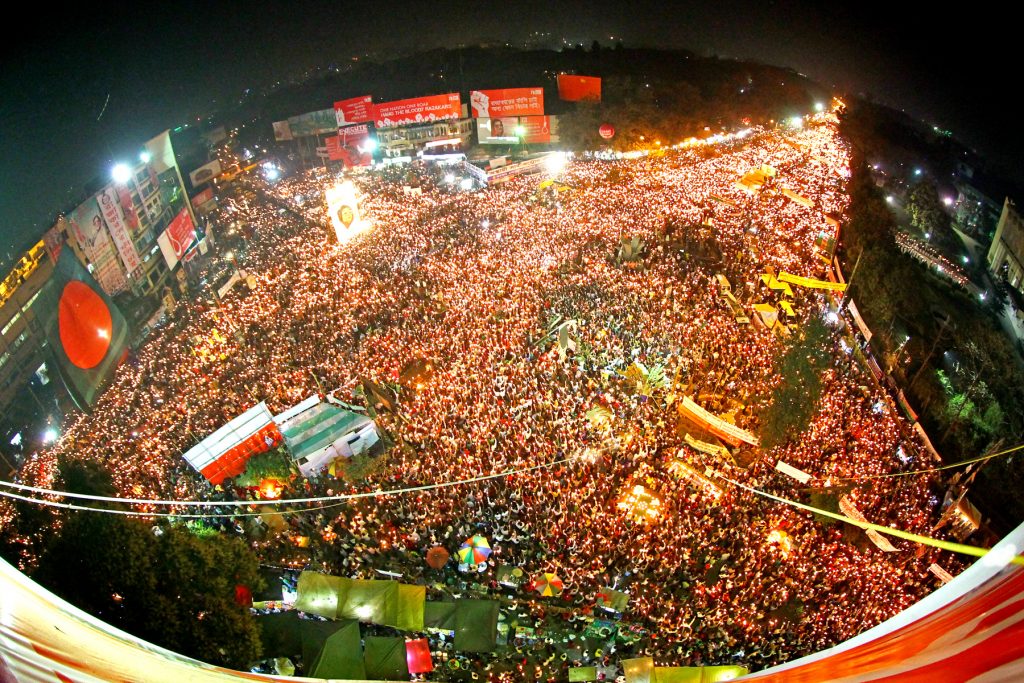
We collected signatures of scores of thousands of passers-by who were convinced of our cause of demanding capital punishment for these Rājākārs accused of heinous crimes. We submitted their signatures to the authorities. This movement was widely highlighted in the international media. At that juncture on 15 February 2013, one of us, Ahmed Rajib Haider who used to express his atheistic worldview under the pseudonym Thaba Baba, was hacked to death by the Islamists. Sword was used to silence the pen. Starting from the next day, attendance at our protest dropped significantly. We held the funereal of Rajib at Shahbag itself but the movement was losing stream after having suffered from political intrusion.
What happened then on the March 7, 2013 when you were severely wounded in an assassination attempt?
Within three weeks of Rajib’s death, I was coming back to my home after attending a programme in a public bus, two persons aged about 20 in Islamic attire started following me. Another person in similar attire came in front of me and on his gesture, these two persons from the back assaulted me with machetes. I suffered deep injuries in my head, shoulder and chest. I did not panic and ran in my bloodied state to take cover and reached a traffic police box. I am pretty sure, that run would have earned me a Gold Medal at the Olympics. (laughs)
The police promptly took me to the nearest hospital and after receiving first aid there, I was transferred to the Dhaka Medical College. I was admitted there for weeks and was healed with time although my left side was partially paralysed for many months.
Did you receive support from the society against these deadly attacks on you?
Not really. On the other hand, my attackers enjoyed support from the very top echelon of the society to all the way down. When I later registered the case of the assassination attempt on me with the police, the policeman present there was unhappy to know about my atheistic inclinations and wryly commented that I was the one who should first be arrested. Can you just imagine that!
Pressures were building upon my family—my wife and in-laws—to withdraw the case against the Islamist attackers, from all quarters including the police. My employer categorically told me that my atheistic assertion made my colleagues avoid my company. And, I was forced to resign from my job.
This continuous pressure from all quarters made my wife divorce me to avoid living a dangerous stressful life.
I became an ultimate social pariah. I was given nominal police protection but I was convinced that the threat to my life would persist as long as I remained in Bangladesh. Sympathetic police officers too told me privately that if a change in political power took place with a person with stronger connection to Muslim fundamentalists, then I might even be arrested.
We see. It was impossible for you then to go back to live your normal life after this murder attempt. How did you survive then?
I emigrated to Bahrain, a relatively secular country, in the Middle-east in November 2013 and took a job employing my skills in multimedia and creative work. I simply disappeared from the rest of the world and lived a dormant life.
But you could not remain long dormant, could you?
I was shaken altogether again on 7 August 2015 when Neeloy Nil, my good friend, was hacked to death in Bangladesh because of his atheistic beliefs. I decided again to voice myself using social media against the intolerance of Islam. My activism earned me many admirers in the social media. This time I was cautious and did not reveal my real location to anyone.
I used to be the only executive in my office when I used to post things in the social media. All others in my office were manual workers, although from Bangladesh. I did not see this coming that some of them reported to my employer regarding my atheistic outlook and activities. A conspiracy was hatched against me. One day they had tactfully secured their official secrets from me. When I reached home that evening, I was fired over a telephone call. Gradually I came to know that a case of blasphemy has been registered against my name that would translate into a prison sentence of 15 years for me. I found myself alone cornered in a foreign land with even my passport in possession of my erstwhile employer who had turned hostile.
So your employer took exception of your atheism, really harshly. Did you get a chance to explain your case to him?
I had to surrender to my employer even after he had fired me most unethically and also deprived me from my due benefits as an employee. He categorically told me to leave Bahrain same day. My repeated pleadings to him fell into deaf ears. He was adamant and he did not even care about the precarious state of my life in Bangladesh if I had been made to land in there. Immediately I was boarded by him on a flight to Dhaka.
Again at Bangladesh! You escaped to Bahrain from Bangladesh to secure your living and freedom of expression. How did you respond in such a difficult time of your life?
I managed to call my mother over phone from the airport and told her to purchase a ticket to Kathmandu, Nepal for me. I landed in Dhaka airport and did not even set foot outside the airport. She came over as visitor inside the airport and handed me the ticket. Next day from Kathmandu, I took an enormous journey to India for about 18 hours. I crossed the border to India taking help from one of my contacts—it was a quite simple affair at the end.
Why did you choose India?
Through social media, I have a long list of friends in India. I was helped by some of them to get a temporary legal stay in India.
What is the difference in cultural attitude between Bangladesh and India from an atheist’s viewpoint?
In Bangladesh, my life is at stake for my atheism, but lakhs of people, actually persons in influential positions, are atheists in West Bengal. They can express their opinion freely and fairly. People from both West Bengal and Bangladesh are Bengalis and from the very same culture. The only reason that I cannot express myself freely in Bangladesh is that it is a Muslim majority country while West Bengal is still not one. And, I know for sure that the day West Bengal becomes Muslim majority, I would lose my freedom of speech.
In fact, many Bengali intellectuals in West Bengal look for a Hindu-Muslim unity across the border, between West Bengal and Bangladesh. Your take?
Often people quote the line written by great poet Kazi Nazrul Islam:
We are two budding flowers together, the Hindu man and the Muslim man.
I retort back:
Oh Dear! Oh Dear! Then why did you break India and create Pakistan?
Riyadh to Dhaka to Bahrain to India—your long journey was more of a mental development. Of developing better and better understanding about the world around you. What is your identity now?
Biologically I was a human being when I was born like I am now. I, today, say with pride that culturally I am a sanatani—the follower of the eternal tradition, the Sanatan Dharma. Had some Muhammad Ghori or some Ikhtiyar al-Din Muhammad bin Bakhtiyar Khilji not converted my ancestor on the point of sword to Islam, I would have grown up chanting a hymn in my own language rather than uttering prayer in a foreign language.
What is your attitude towards Hinduism?
Because of my background, my knowledge of Hinduism is limited. I am always against the oppressor and with the persecuted. I found my voice in the following verse of the Gita (4: 7-8):
Yada yada hi dharmasya glanirbhavati bharata
Abhythanamadharmasya tadatmanam srijamyaham;
Paritranaya sadhunang vinashay cha dushkritam.
Dharmasangsthapanarthaya sambhabami yuge yuge.
This verse clearly says that the oppressor will be defeated and the persecuted will receive the final justice. Can any word of the world be sweeter than this couplet?
Do I believe in everything of Hinduism? Hell No! But I know something for sure: Hinduism can be changed, it can be reformed. Two hundred years ago, Sati (immolation of wife in husband’s pyre) was part of the Hindu tradition; today not a single Hindu even considers its reintroduction.
You are a victim of Islamism and like in Bangladesh, Islamism has become a recurrent problem in many Muslim societies across the world. However, most Muslims are good persons irrespective of the theology of Islam. Atheists like Sam Harris feel that the attack should be against the Islamic Theology which is at the source of the Islamism problem. On the other hand, people like Maajid Nawaz or Ayaan Hirsi Ali feel that taking a direct hit at Islam will mean a terrible bloodshed as innocent Muslims will be in a dilemma. The best thing to tackle Islamism is to reform Islam.
What do you think about it? What is the most humane solution to this problem?
Yes, it is definitely true that most people in a Muslim society are peaceful. If there are a hundred violent muslims, more than a lakh of the peaceful moderate muslims remain in the same society. The only problem is that these moderate muslims act as apologists for the violent muslims. What we require is to bring out the truth about Islam to all Muslims. Let them study Quran and understand if we need this Quranic Law for the civilised human society of today. Why the attack happened against me? A clear possibility is that I could match the Islamists to discuss the Quran with my knowledge of Arabic, which they could not digest.
At the same time, Madrassas must be closed and modern education should be imparted to all the Muslims without exception. Vigilance must ensure that funds and operational facilities remain outside the reach of the Jihadi Muslims.
Do you have any final word to offer to the readers of this article?
My final submission to the Hindus and to the atheists: If you do not read the Quran being a Hindu or being an atheist today then you will have to read it tomorrow being a Muslim.
The post A Sanatani Atheist: In Search of My Freedom of Expression appeared first on Dharma Today.
]]>The post Triggers of Narcissism – Understanding Anna-maya appeared first on Dharma Today.
]]>In this thrilling crime saga, the child grows up in a broken home, abused and neglected. He ends up in foster care, lonely and unloved. Eventually, as he grows this child finds some semblance of self-esteem and control over his destiny, but through a life of crime. He rises through the ranks and becomes the stuff villain movies are made of – a Bad Guy.

Pick any of the last 100 hero-villain Hollywood or Bollywood features and you will typically come across an antagonist that exemplifies narcissism, violence and fear. And the aforementioned profile is their typical backstory give or take a few details.
‘I, me and mine.’
These traits are found in the lowest grade of consciousness in the pancha kosha system – anna-maya. While such a state is considered quite normal, adorable and expected for an infant, it becomes a recipe for chaos and suffering if we are not dislodged from it as we grow into adulthood. Since anna-maya is the type of consciousness that evokes self-centeredness and a yearning to satisfy carnal, material needs, the subtleties of life are elusive here. It’s only the voice of ‘I, me, and mine’ that filters every decision and behavior.
Going back to the theme of hero-villain movies, most of the time we enjoy witnessing the downfall of the villain not realizing that we ourselves may embody many of those very same villainous qualities which we naturally despise. This perception can mask the realities of our inner lives.
Not me
The pancha kosha (Five Types of Consciousness) are all embedded within each of us. Each living being has the potential to evoke the lowest to the highest state of consciousness to varying degrees AND varying mixtures. This means that we also may very well embody the lowest state of villainous consciousness although we may not always exhibit it. We usually think this villain is “not me”.
Contrary to the notion that consciousness is passive and indirect, it is actually a form of energy that takes an active part in our lives. It directly influences our inclinations, desires, thoughts, feelings, decisions and behaviors. Moreover, the multiple types of consciousness can be active simultaneously.

Sometimes me
While most of our days might be consumed in doing hard work, taking care of the family and supporting society, it is entirely possible to become a “mini-villain” given the right amount of provocation. Rash driving, unwelcomed behavior, or an intentional slight are just a small fraction of emotional, verbal and physical aggressions towards others or oneself. When we are caught up in such a moment, it’s not until the aftermath that we may feel a sense of shock and concern at what just happened. “I had no idea I could be so angry or this could be me,” we may ponder.
Such reactions feed the anna-maya within us and the more we feed this kosha, the hungrier it gets. The nature of each type of consciousness is to dominate our entire being. That means it needs to suppress the other states of consciousness in order to do so.
Eventually the shock wears off. The more you feed this tendency, the more used to it you get. Once it becomes an acceptable behavior, it becomes a part of your personality despite its self-destructive power. Even while the guilt builds internally, the mind grows habituated to this new pattern. This further has a cascading effect on our relationships to family, friends, society and so on.
Trouble ahead
The mere build-up of stress or guilt can lead to depression and psychological disorders. It could increase one’s proclivity to immoral and unethical behavior like lying and cheating. For some it may lead to criminal activities. A quick escape from this wild and treacherous path can easily turn into a life addicted to drugs, alcohol, food, TV, etc. The key to remember is that anna-maya is a state where emotions overrun the intelligence and common sense like an unleashed pack of wild dogs.
Therefore, what we do with our minds, bodies and speech has a direct and proportionate impact on our internal conditions. A vicious cycle of self-defeating desires and behaviors must not be allowed to take hold. But how can we control anger when we have been so seemingly wronged in life? How do we curb the lust for the things that have captured our minds? How do we starve the anna-maya in our lives?
When you go to a reputed doctor, they will give you two approaches to handling a disease or ailment. First will be prescriptive medicine – what you should do right now to stop the symptoms. Then, they will discuss preventative measures to minimize or eradicate the chances of the problems recurring.
The Prescription

Dealing with the ravages of the anna-maya mindset in our lives requires the same two approaches. When you are in the heat of the moment and about to succumb to anger, depression or addiction, there are innumerable techniques from many experts you can leverage to draw yourself out of that zone.
- The Price Tag – Try and force yourself to remember the price you will have to pay for the behavior. With emotions colliding at the speed of light within our minds, it can be extremely difficult to think ahead but if you can manage to, you are already a step closer to a better situation.
- Empathy Blitzkrieg – Force yourself to care in the moment even if initially it doesn’t feel genuine. Put yourself then in the shoes of the other party or your future self. Try hard to see things from their eyes. It may take only a split second of empathy to snap yourself out of the negative consciousness.
- The Best You – Quickly remember the person you want to be and aspire for. If you never thought of it, think of it right there and then. Imagine a ‘better you’ that is urging the ‘current you’ to take a breathe.
- Breathe – Then take a breathe. Follow the breadth. This is a powerful tool in any meditative practice and a quick way to curb your ego for a moment. In that moment, you will be able to acknowledge that there is more to your existence than this problem.
If you do the above long enough and often enough, you will likely be able to get rid of a great deal of trouble. However, sometimes the problems are too deep and a psychological pill is just not enough.
Power of Prevention
The prescriptive approach is there to keep the anna-maya at bay. But the real art is in preventing that low energy from drawing us in. This is where a deeper understanding of our existence and purpose in this world become key to unlocking our true potential. To overcome the self-indulgent forces within us, we need to accept several critical axioms:
- Our identity is not of this material realm. We are above the temporary upadhis (identities) such as mother, father, friend, enemy, employee, boss, etc. The ultimate identity is the eternal one – I am atman. Accepting this simple premise has massive implications that will be discussed in future writings.
- Love of the body and all the material pleasures is actually a perverted reflection of our true nature – to be a full embodiment of love for all existence.
- Karma confines us to delusions of material hankerings and sufferings.
- Our dominant consciousness carries us to our next material destiny through reincarnation.
Armed with this foundation, we can develop a strategy to pull away from our conditioning. The key word being strategy. The game plan is to build a foundation that will outlast the effects of time. It means we need to overlook initial defeats as we continue to fortify our futures with deeper realizations. These all-important realizations come through committing oneself to a spiritual practice based on a Dharmic system. However, whichever system or path one may take shelter of, there are two non-negotiable steps a sincere reformer must partake.
#1 Good Advice
Firstly, anyone seeking to elevate their consciousness to a new stratum must seek and accept feedback from a trusted source. This could be a difficult thing to do especially if you are an adult. Adults tend to be set in their own ways having constructed defensive walls to prevent others from damaging their status quo. This has a major downside in that even trustworthy experts who can provide transformational advice would be locked out.
Therefore, we must search for a bond with someone who:
- Has our best in mind
- Knows more than we do about self-development
- Has overcome anna-maya on many occasions themselves
#2 Introspect
No matter how much advice we take, we ultimately must walk the journey ourselves. As the master Morpheus famously tells the hero Neo in the movie The Matrix, “I’m trying to free your mind, Neo. But I can only show you the door. You’re the one that has to walk through it.” It’s our journey and ours alone. Hence, we must develop the faculty to question ourselves; almost like the Socratic method of persistent question and answer until real truths are unearthed. Here our buddhi (higher intelligence) is both asking and answering the questions.
This introspective practice can take some time to get used to. It is not easy to dig up answers we may have tried hard to bury. “Why did I yell so much at my son? It’s only dirt he was playing with. This is the second time today and fourth time this week I almost went out of my way to chastise him. Where did this anger come from? Is it really about him?”
Without serious introspection, good advice will roll off like a water drop from a balloon. We need to soften our inner selves that has been very much hardened by anna-maya. No one has more power to do this than our very selves.
Conclusion
Just as the idea of darkness exists because of the presence of light, the worst part of who we are can show the way to the best of what we can be.
The post Triggers of Narcissism – Understanding Anna-maya appeared first on Dharma Today.
]]>The post Butcher our Cattle but not in my Backyard appeared first on Dharma Today.
]]> There is another market prevalent in many parts of India, that of ‘pseudo-mutton’ – meat from young calves. This meat is most highly valued by consumers and hence for farmers this is the most cash-rewarding. This is mostly the meat available in roadside bars and restaurants (often sold in the name of goat or sheep mutton).
There is another market prevalent in many parts of India, that of ‘pseudo-mutton’ – meat from young calves. This meat is most highly valued by consumers and hence for farmers this is the most cash-rewarding. This is mostly the meat available in roadside bars and restaurants (often sold in the name of goat or sheep mutton).
A Reality Check
India also stands among the lowest in the pecking order of ethical treatment of slaughter animals. The brutalities inflicted and the scale is no less than a genocide. According to conservative estimates by PETA, roughly two million cattle are annually transported to the state of West Bengal from where they are smuggled to slaughterhouses in Bangladesh. In violation of transportation laws such as Transport of Animals Rules, 1978 and Motor Vehicles Act, 1988 (which allow for 4 to 6 animals to be transported at a time) almost 25-30 are crammed in a lorry. They are beaten, kicked, deprived of food and water, and are often trampled to death due to high speed driving of the lorries. Pack and draft animals with their large torsos and relatively weak legs are ill-equipped for the bumpy rides on Indian roads. Their limbs get broken during transport because cattle smugglers often drive through rural roads to avoid police check-posts. They are tied together with ropes piercing through their noses. When their pace slows down, their tails are snapped, or tobacco, chilly powder and salt are rubbed into their eyes. The unlucky animals that reach the abattoirs alive, are killed by slitting their throats. Others are skinned alive.
Even in licensed slaughterhouses, cattle are routinely beaten and electrocuted.[1] Since by law healthy young cattle cannot be killed, their owners maim them, break their legs or poison them so that they can be declared ‘fit-for-slaughter’ by corrupt veterinary doctors or serving state officials.[2] Maneka Gandhi once noted that she saw 900 cows crammed in a train wagon that had a capacity of 80-100. On arrival, 400-500 came out dead.[3] In Kerala, they have a unique way of killing cattle – their heads are beaten to a pulp by a dozen hammer blows.
Writes Anne Kellogg in the Quartz[4]:
Science—and common sense—tells us that cows are sentient beings who value their lives in the same ways that we value ours. Did you know that cows[5] have distinct personalities? Some are bold and adventurous, while others are shy and timid. They are intelligent and curious animals who form social hierarchies, can recognize more than 100 members of their herd, have best friends and cliques, and even hold grudges against other cows who have treated them badly. They also mourn when a loved one dies, and there are countless reports of mother cows frantically calling and searching for their calves after they have been taken away and sold for veal.
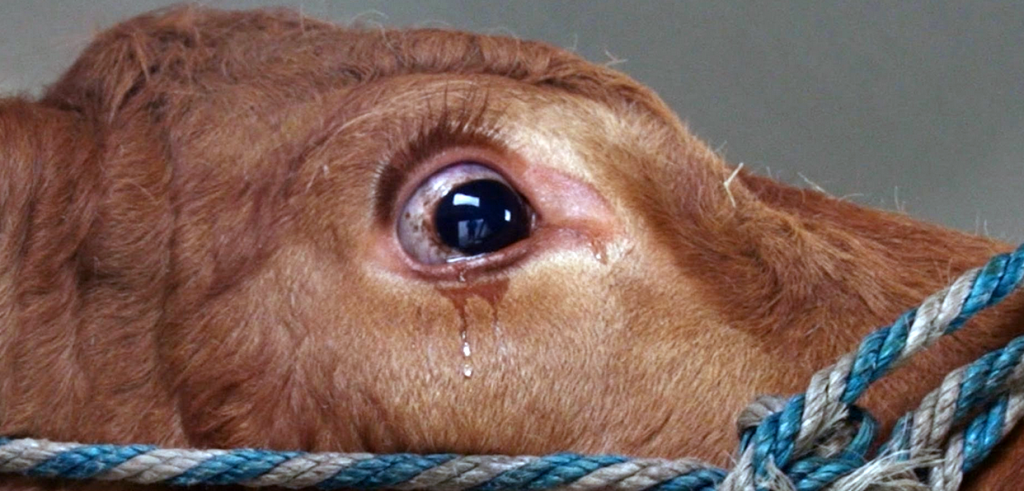
While we continue to believe in ourselves as world leaders in vegetarianism, it is easy to make up from the numbers of cattle slaughtered that this is not possible only due to food habits of Muslims and Christians in India. The irony is that while Hindus largely do not consume beef or buffalo meat, the supply of bovines comes from farmers that are predominantly Hindu. What explains this strange dual behavior – of least consumption and highest production? Critical scholars will very likely quote-patchy texts from Hindu scriptures to propose that we were always a beef-consuming race. That with the discovery of the bulls’ utility for farming we changed preferences. Very convenient, but this does not explain why no other civilization – which have all done equally well in discovering agriculture – did not follow the same path. Ill-informed and sentimental dharma-rakshaks on the other hand, will be in constant denial that there is anything wrong with our ‘cow protection’ culture. They will not want to even see that the milch cows from our dairy industry is actually the main source of beef cattle apart from bulls and buffaloes.
The Social and Legal loopholes in Cow Slaughter
There are two aspects to why we have a buoyant cattle slaughter industry – the physical and the psychological. Firstly, there is this bad economics for a stressed farmer in maintaining cattle that can neither work in the fields nor give milk (technically known as ‘useless’ cattle). This is especially a problem in drought prone areas where green fodder is not readily available and buying dry fodder makes maintenance quite expensive. In desperate conditions where a farmer prefers to commit suicide so that their family can partake of some meagre government compensation, it is not hard to think they will sell their cattle even if there is an emotional bond. In fact, decades of penury and struggle for basic existence have desensitized farmers to an extent that selling cattle for slaughter is a norm and has become an important part of their income smoothing behavior. Hence farmers have been badly hit by the new anti-slaughter laws in Maharashtra, for instance, where prices of cows in the secondary (slaughter) market has fallen by over 50% owing to a reduction in their demand.[6] Over the last few decades, the useful cattle life has now come to average around 4-5 years. Farmers knowing this, pump them with hormones and perform other unethical practices, so as to maximize milk extraction during this productive lifetime. Once the cattle is weak and useless, they fetch a price in the secondary market that is either the same or higher than what they spent on buying it. So for them selling cattle is ‘good’ economics.
A second feature is loose regulation and enforcement of ethical treatment principles. To give an idea, the Food and Agricultural Organization of the United Nations (FAO) assess the best practices of welfare for slaughter animals in the European Union. Just to sample a few of the hundreds of micro regulations:
- ill or injured animals should be segregated and offered comfortable bedding;
- air circulation, dust levels, temperature and gas concentrations should be such that animals are not harmed;
- animals must be provided artificial lighting when natural lighting is not available;
- all automatic and mechanical equipment important for upkeep of good animal health must be inspected every day;
- animals must be provided appropriate feed and water so that all their physiological needs are satisfied;
- only certified and competent drivers are allowed to transport animals;
- a journey log has to be maintained by drivers with details of journey times, food, rest and water;
- slaughter operations can be carried out only by certified butchers;
- all animals need to be compulsorily stunned before slaughter (stunning is an intentionally induced process which causes loss of consciousness and sensibility);
- carotid arteries and blood vessels must be severed immediately so that there is maximum blood loss leading to death before the effects of stunning fade away and the animal regains consciousness;
- the only exception to stunning is for religious slaughter where animals are killed in full consciousness.
In India, even the legal framework is very weak, not to mention the enforcement. While statutes enjoin dos and don’ts, they don’t stipulate penal provisions for contravention. Consequently, there is limited deterrence. The basic institution here is The Prevention of Cruelty to Animals Act, 1960 with an amendment in 1982.[7] In this Act, the only mention of slaughter animals is under Section 9.e. and in relation to the role of the Animal Welfare Board of India (AWBI) which is to:
advise the Government or any local authority or other person in the design of slaughter-houses or the maintenance of slaughter houses or in connection with slaughter of animals so that unnecessary pain or suffering, whether physical or mental, is eliminated in the pre-slaughter stages as far as possible, and animals are killed; wherever necessary, in as humane a manner as possible;
Due to its obvious lack of specificity, in 2001 the Central Government instituted rules specific to slaughter houses known as the Prevention of Cruelty to Animals (Slaughter House) Rules, 2001.[8] This was a great advance as far as formal rules for legal slaughter houses were concerned. In it are enshrined a few ethical treatment guidelines, such as: no animal can be slaughtered in the sight of other animals; mandatory stunning before slaughter; compulsory veterinary inspection before culling and protection of animals from heat, cold and rain. Yet, they are not sufficient and no way close to international standards. Most of the regulations within this Act are concerned with infrastructural specifications that need to be adhered to by any slaughter house for receiving a license. Failing compliance such abattoirs can be shut down. Yet, empirical observation suggests gross non-compliance by licensed slaughter houses. And given that the number of illegal slaughterhouses is roughly ten times that of the legal ones, the scale of brutality can only be imagined.
The Ethical Quotient in Slaughter
From the sense of government, the economic and the regulatory reasons are necessary conditions for a buoyant illegal slaughter industry, but they are not sufficient. In the ethical sense while there can be no justification or better way to legislate the business of brutality, the third and the psychological component is inevitable, which I call as displaying the NIMBY syndrome: Not in My Backyard. As long as I don’t have to witness the pain of my cattle, I will sell them; as long as my house doesn’t get stained by blood, let slaughterhouses exist; as long as I don’t have to butcher myself, let’s eat dead animals; as long as my country/state does not permit, let cattle be trafficked and genocide happen; as long as I can buy cheap milk, let the giver of the milk walk towards brutal death.
NIMBY is an attitude ascribed to persons who object to the siting of something they regard as detrimental or hazardous in their own neighborhood, while by implication raising no such objections to similar developments elsewhere.
(Oxford English Dictionary, 2005)
Essentially the mentality is – Adharma can exist, but Not in My Backyard!
So what is the way forward? Is it a hopeless situation given the sheer magnitude of the problem and sensitive personal food preferences? Or barring of all animal derived products (including milk) is the ultimate way out? As must be clear by now, it is a multi-pronged problem – so the solutions have to be at economic, legal and moral levels. The first step is to ensure rural livelihoods are strengthened, where the dairy value chain ensures cattle can be supported very economically even after it is past its utility. Research into products and utilities based on cow-dung and cow-urine would further strengthen the morale behind cow protection. A mechanism to compensate farmers for upkeep – such as micro-finance or community supported gaushalas, panjarpoles can help. It is high time temples make sure a certain portion of its income is mandated for setting-up and running of gaushalas. It is also important to preserve commons or designated cattle grasslands (gomala lands) in villages. Many such initiatives exist already, but they need to be scaled up.

A shift to complete milk-less diet as propounded by vegan organizations will be a stretch as there is no counterfactual to prove that a meat industry will also evaporate along with it. It is akin to throwing the baby out with the bath water. Milk is not a problem, neither are cows, as long as the dairy process is ethical and loving. One way is to incorporate a cleaner milk market through higher prices. Of course, expenditure saved on meat can help match up the price mark-up for the urban consumer, while a targeted price rationing can be devised for low income households to maintain their nutritional balance. Difficult but not impossible.
Those in the business of brutality should be punished severely as per the law of the land, whether they are cattle thieves or illegal slaughter house owners. Rules of ethical treatment have to be enforced with strictness and those not adhering to those should face stringent sanctions. It’s high time the Draft Animal Welfare Act, 2011 which contain more sensitive guidelines for ethical treatment, be passed by the Parliament. Most importantly though, a dharma-based education and awareness needs to spread aggressively by all humanitarian organizations, so as to counter the Not in My Backyard attitude.
One common justification for beef-eating provided by scholars, especially in the context of India, is that ancient and pre-medieval Indians ate beef. Even if that were true, so what? Should we also promote slavery because one of the world’s ‘greatest’ nations believed in that for centuries? Let’s focus on the present day: the enemy here is extraordinary brutality, the fight is about simple, ordinary morality. Dharma teaches us that the universe is our home and each one our family – Vasudhaiva kutumbakam – what then is Not in My Backyard?
[2] http://www.frontline.in/static/html/fl1818/18180380.htm
[3] http://www.independent.co.uk/news/world/asia/how-indias-sacred-cows-are-beaten-abused-and-poisoned-to-make-leather-for-high-street-shops-724696.html
[4] https://qz.com/578941/bangladeshs-nightmarish-leather-industry-makes-the-case-for-vegan-products/
[5] http://www.peta.org/issues/animals-used-for-food/factory-farming/cows/hidden-lives-cows/
[6] http://indianexpress.com/article/india/india-news-india/dairy-economics-a-ban-most-farmer-unfriendly/
[7] http://www.envfor.nic.in/legis/awbi/awbi01.pdf
[8] http://www.envfor.nic.in/legis/awbi/awbi17.html
The post Butcher our Cattle but not in my Backyard appeared first on Dharma Today.
]]>The post Guru Purnima: Origin, Meaning, Practice appeared first on Dharma Today.
]]>There are many Sanskrit prayers honoring and seeking the knowledge of a Guru. The Guru Stuthi[2] sums up the knowledge seeker’s desire to learn and humbly seek the knowledge, material or spiritual, by the grace of the teacher:
akhand-mandalakaram, vyaptam yena characharam, tatpadam darshitam yena, tasmai shri gurave namah:
“I was born in the darkest ignorance, and my spiritual master opened my eyes with the torch of knowledge. I offer my respectful obeisance unto him.”
agyan timir-andhasya, gyananjana shalakaya, chakshur-oonmeelitam yena, tasmai shri gurave namah:
“My salutations to that reverential teacher, who opened my eyes, by applying the divine collyrium of self-knowing in my eyes, which were blinded by the cataract of ignorance.”
Gurur Brahama, Gurur Vishnu, Gurur devo Maheshwarah, Gurur Saakshaat Para-Brahama, Tasmai Shree Guruveh Namaha:
“Guru is Brahma, the creator, Guru is Vishnu, the Preserver, Guru is Maheshwara, the renewer of all things, Guru is verily the Supreme Reality, To that Glorious Guru, My Salutations.
The source of these prayers or salutations to the Guru is rooted in the Sanatana Dharma or Hindu philosophical systems that pervade and stem from India. Religiously, a Guru Puja is performed to make offerings and pay one’s respects to the Guru. In many Hindu temples across India, the sanctum sanctorum of a deity is often shrouded in darkness, unlit. Through the ritual of lighting a diya, or an oil lamp made with a cotton wick dipped in ghee, the sanctum sanctorum is illuminated through several of the above and other various chants. Thus, symbolically and ritualistically, the concept of Guru is constantly remembered and celebrated: one who removes the darkness and thrusts us with knowledge into the light.
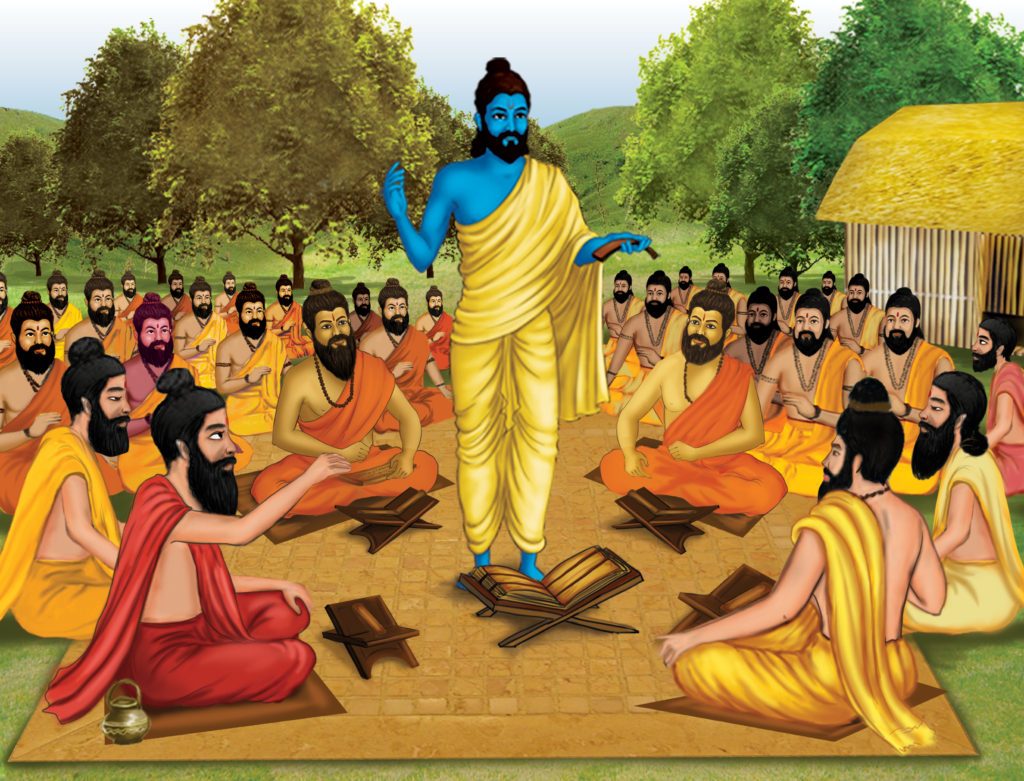 In the yogic tradition rooted in Hinduism,[3] it is said that the Adi Yogi, the first Yogi, appeared in the land now called India. Given his deep state of bliss, seven individuals, also known as Saptarishis, pleaded with the Adi Yogi to give them the same experience. The Adi Yogi, seeing their perseverance, decided to bestow upon them a yogic practice, which the seven men performed with intense will for eighty-four years. Amazed by their austerities and mastery, the Adi Yogi decided that on the full moon day, or purnima, to become their Guru. Thus, a Yoga teacher, not only the one that teaches you to twist and turn your body but also the one that truly gives you the knowledge to bridge the gap between the body and the mind (yo – ga: union), is considered to be a real Guru.
In the yogic tradition rooted in Hinduism,[3] it is said that the Adi Yogi, the first Yogi, appeared in the land now called India. Given his deep state of bliss, seven individuals, also known as Saptarishis, pleaded with the Adi Yogi to give them the same experience. The Adi Yogi, seeing their perseverance, decided to bestow upon them a yogic practice, which the seven men performed with intense will for eighty-four years. Amazed by their austerities and mastery, the Adi Yogi decided that on the full moon day, or purnima, to become their Guru. Thus, a Yoga teacher, not only the one that teaches you to twist and turn your body but also the one that truly gives you the knowledge to bridge the gap between the body and the mind (yo – ga: union), is considered to be a real Guru.
In the wisdom tradition or Jnana-kanda, portion of Hinduism, the Upanishads are a perfect example of the Guru and Shishya (disciple) relationship. Upanishads and the Aranyakas, were taught in the forest hermitages or academic institutions where it was more conducive for the student and the teacher to engage in discussions and debate about the nature of existence. In fact the word Upanishad reveals a great deal about the nature of such exchanges.[4] Upanishad is divided into three parts: upa – ni – shad. “Upa” means to “move closer or nearer,” in the philosophical sense, it would mean “to move nearer to the truth” and in the practical sense it would mean to “move nearer to the teacher.”[5] In this respect, it means to pay attention, without reservations, to what is being taught – dissolving the distance between the teacher and the student.[6] “Ni” means to “sit down or at a lower level,” not physically but mentally.[7]
The idea here is to allow the student to realize “that there are things to be learned and I do not have all the answers, so let me listen to someone who can teach me.”[8] This is about developing a sense of humility between one who seeks knowledge and the knowledge-bearer. With this humility to understand what one does not know, “shad” means to “settle down in the mind” – to be free and receptive to what is being taught.[9] These syllables not only apply to the student but to the teacher as well. Therefore, the Jnana-Kanda or the “wisdom-section” of the sacred scriptural texts within Hinduism are taught in the context of a Guru-Disciple engagement, debate, and discussion. Indeed, the wisdom and insight revealed by the Upanishads into the fundamental questions regarding the nature of life itself and its function in the natural world is a testament to the idea that knowledge flourishes where there is a practice of such complete humility between the teacher and student relationship.
For today’s world, Guru Purnima and the karmic performance of honoring a Guru is essential in many ways. Many have the attitude of “I know all,” one rooted in arrogance and ego. Many who have studied certain subject matter are convinced and have concluded that their framework in classifying knowledge is “it.” Such minds, which reject the opportunity to inquire and learn with humble skepticism, will struggle to fulfill the completeness or wholeness that they, and every living being on this planet, truly seek. Such completeness can only be accomplished with an attitude eyed towards the desire to learn and fulfill one’s thirst for material or ultimate knowledge.
Nurturing this attitude is an essential step towards finding a Guru capable of providing one with the necessary knowledge towards meeting their goal of becoming complete. One way to nurture such an attitude is to engage in the simultaneous act of humility and gratitude. With humility, one is able to carefully allow oneself to obtain knowledge from every one and every thing that pervades this universe. This watchful, humble attitude that “there maybe something I can learn here” will allow one with a quiet mind to identify points of inquiry and points worthy for a swift rejection. When one finds that point of inquiry, the simultaneous act of expressing gratitude will open up windows of knowledge in ways unimaginable. Such simultaneous practice of gratitude and humility will propel an individual to truly progress from ignorance to knowledge, and thus, darkness to light.
Whether it’s an insect or an adorable child, a friend or a companion, a mother, father, or a professor, a spiritual guide or a friendly neighbor, a colleague or a boss, a Guru comes in many forms. On this occasion of Guru Purnima, I hope we take the opportunity to thank others who have removed the darkness of ignorance and brought us into the knowledge filled with light. I hope that we take the opportunity to learn from others and what they have to say about their experiences and understanding of something. I hope that we take this time to introspect and open ourselves to the possibility, just like the Saptarishis who practiced the teachings of the Adi Yogi, to evolve consciously.[10]
May all of this reflection and action of inner transformation make us worthy instruments of peace in service of others.
[1] This year, the festival falls on July 9, 2017.
[2] Rendition and translation by Sri M.
[3] Sadhguru Jaggi Vasudev, Classical Yoga: An Introduction to the Origin of Yoga.
[4] Sri M, Wisdom of the Rishis: The Three Upanishads, the Ishavasyaa, Kena, and Mandukya [Karnataka: Magenta Press, 2002], 2-3.
[5] Ibid.
[6] Ibid.
[7] Ibid.
[8] Ibid.
[9] Ibid.
[10] Sadhguru Jaggi Vasudev
The post Guru Purnima: Origin, Meaning, Practice appeared first on Dharma Today.
]]>The post The Indic Socio-Political Thinking appeared first on Dharma Today.
]]>Dharma tradition, one of the oldest social systems, has its own socio-political narrative. This narrative can, arguably, be identified with Indian nationalism which, in the late nineteenth and early twentieth century, was founded upon principles of Dharma. For instance, Sri Aurobindo[i]—in his Uttarpara speech in 1909—explained this connection:
When you go forth, speak to your nation always this word, that it is for the Sanatan Dharma that they arise, it is for the world and not for themselves that they arise. I am giving them freedom for the service of the world. When therefore it is said that India shall rise, it is the Sanatan Dharma that shall be great… When it is said that India shall expand and extend herself, it is the Sanatan Dharma that shall expand and extend itself over the world. It is for the Dharma and by the Dharma that India exists. I say that it is the Sanatan Dharma which for us is nationalism. This Hindu nation was born with the Sanatan Dharma, with it it moves and with it it grows. When the Sanatan Dharma declines, then the nation declines, and if the Sanatan Dharma were capable of perishing, with it the nation would perish. The Sanatan Dharma, that is nationalism.
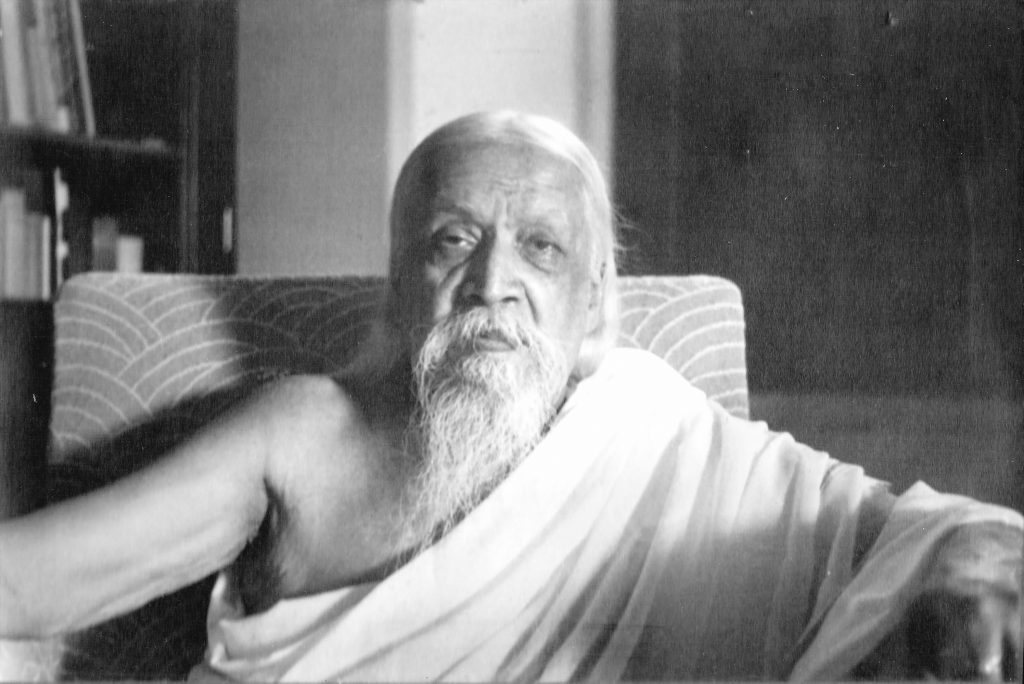 Being inspired by this narrative, the Indian leaders in the early decades of twentieth century refused to acknowledge the western worldview and insisted on “swaraj” as the political goal rather than mere independence from British rule. Bal Gangadhar Tilak, a famous nationalist of those times, who is often quoted as “Swaraj is my birth-right and I shall have it”, wrote a commentary on Gita, The Gita Rahasya, that explained dharma as the key to his socio-political narrative.
Being inspired by this narrative, the Indian leaders in the early decades of twentieth century refused to acknowledge the western worldview and insisted on “swaraj” as the political goal rather than mere independence from British rule. Bal Gangadhar Tilak, a famous nationalist of those times, who is often quoted as “Swaraj is my birth-right and I shall have it”, wrote a commentary on Gita, The Gita Rahasya, that explained dharma as the key to his socio-political narrative.
“Swaraj” literally means Rule of the True Self. Dharma traditions acknowledge everyone’s True Self as self-same Pure Consciousness, often called the Atman.[ii] Generally, nationalism means devotion to one’s own motherland, acceptance of almost everything that belongs to the motherland, and at a minimum, mild rejection of everything that is foreign. However, Indic Nationalism is much deeper than this mere geographical notion of nationalism. Ram Swarup, a profound thinker of the twentieth century, expressed the essence of Indic Nationalism, which was narrated[iii] by Sita Ram Goel in his book How I Became Hindu: Swarup said, “But foreign should not be defined in geographical terms. Then it would have no meaning except territorial or tribal patriotism. To me that alone is foreign which is foreign to truth, foreign to Atman.”
The critics of nationalism often point out that being born in a land is not a matter of choice for a person. Therefore, being proud of one’s motherland is nothing extraordinary. Indic Nationalism is love for the motherland on account of a society that upholds the socio-political narrative of the Dharma Tradition in a continuous manner. And, there is every reason to be proud of being born in a society that has a continuity for thousands of years and has exclusively upheld the rule of the True Self. This ancientness and continuity of Indic civilisation makes it imperative for the members in the society to offer their duty to their society so that the reign of the True Self remains established in their society. This duty-mindedness is the ultimate essence and meaning of Indic Nationalism.
Historically, Indic Nationalism rarely called for territorial conquest but rather focussed on founding Dharma-based societies in other lands, as opposed to European origin nationalism. Even Han nationalism that emerged as the Chinese nation, has forever aspired for territorial conquest and annexing new lands. On the contrary, Indian kings always strived for inculcation of Dharma tradition among people of different lands without aspiring for military conquest and needless bloodshed.
In all probability, our Constitution-makers were not blind to this aspect of Dharma which is why they did not include the word “secular” in our nation’s constitution. This omission is likely on account of their understanding of the historic role of Dharma in facilitating governance and administration in India, which would be excluded on specification of the word “secular”. For instance, B. R. Ambedkar regarded Dharma as rational and relatively free of colonial bias. He was also supportive of a fundamental differentiation between Dharma and religion:
I regard the Buddha’s Dhamma to be the best. No religion can be compared to it. If a modern man who knows science must have a religion, the only religion he can have is the Religion of the Buddha. This conviction has grown in me after thirty-five years of close study of all religions. (Preface to The Buddha and His Dhamma)
The above statement clearly shows that Ambedkar was aware of scientific nature of Dhamma—the term for Dharma in Buddhist tradition—and made an analysis of different claims of truth without limiting himself to a faith based imposition.
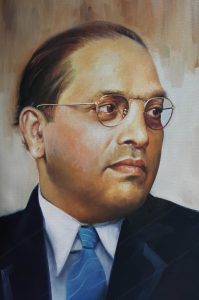
Not only Ambedkar, but the motifs drawn on the original copy of the Indian Constitution by Nandlal Bose and Beohar Rammanohar Sinha, have also been heavily inspired by the Ramayana, the Mahabharata and Sri Buddha apart from diverse historical figures.[iv] These motifs demonstrate that the Republic of India formed on November 26, 1949 was viewed as a civilizational continuity of our Dharma tradition rather than a new nation being forged.
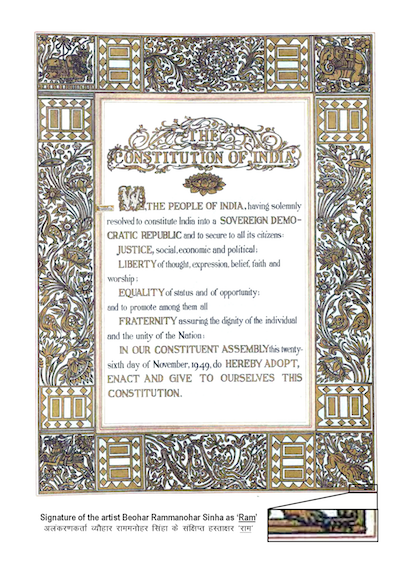
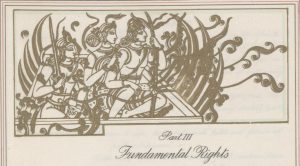

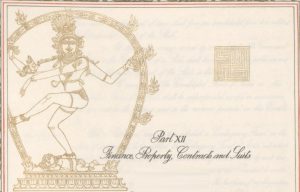

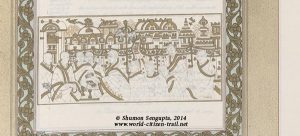



Dharma and Secularism
Things, however, took a sharply radical turn in the post-independence era. The Indian elite have swallowed socio-political understanding of the western lands. Dharma is a word in Indic languages, which is non-translatable in English. Language is often said to be a matter of convention. Therefore, a particular culture may actually understand a word very differently than another one. For example, the word “secular” bears very different connotation to an Indian as opposed to a European. In Europe, a secular person will proactively fight for the right to criticise religious dogmas. Karl Marx said[v], “The criticism of religion is the prerequisite of all criticism.” Interestingly, an Indian secular icon may very well consider criticism of a particular religion inherently as an anti-secular exercise.
Koenraad Elst provided a fine example in his book Decolonising the Hindu Mind (2001) in the backdrop of Indian Government’s banning of Salman Rushdie’s Satanic Verses. He cited Professor S. Guhan, a noted academician and secularist, who argued that banning any book that criticises Islam, is in the interest of secularism. This position, summarily speaking, describes the worldview of many of the Indian secularists, if not most.
When the same word, secular, can mean two diametrically opposite ideas under two cultural hegemonies, we understand the gravity of the problem of translation since the word
Dharma, has no synonym in English at all[vi]. This powerlessness of the highly-enriched English dictionary is a living testimony to West’s lack of exposure to an indigenous Dharma tradition for centuries. Since the West is almost ignorant about the Dharma traditions, naturally they have no understanding regarding socio-political institutions under the Dharma traditions.
To make matters worse, the Indian elite have followed the West in their education, in their socio-political institutions and in their narrative, thereby growing up without any knowledge about our Dharma traditions. When these elites formed their narrative about India, that narrative was devoid of any role for Dharma. The elite in India started learning about dharma in English which translated the word as “Religion”. In their colonised understanding, dharma became the primitive religion of India.
As the cultural roots of the elite have been cut off, they have become a susceptible target for a doctrine that least emphasises the importance of culture on human aspiration and human destiny. Marxism is exactly that very doctrine.[vii] Marxist sociology considers production as the base, and religion and culture as the superstructure—the base influences the superstructure but not vice versa. In other words, man’s emphasis should only be on factors of production, usually never on culture.
Dharma was, therefore, relegated to a very tertiary factor of the human civilisation, in that worldview. Moreover, Marxism, in particular its dialectics on Class Struggle, presents a linear history. Therefore, the contemporary technological inferiority of India was translated as perpetual technological backwardness of India. And, since factors of production essentially shape culture and religion under the Marxist paradigm, technological backwardness of India is translated into cultural inferiority of India. Dharma has become, to the colonised elite, India’s primitive religion whose demise per se would ensure India’s rejuvenation!
This linearity is utterly flawed as historically India was one of the most technologically advanced countries, till the first millennium AD, when the Dharma Tradition was strong in India. The reader may observe the European scientists’ recognition of Indian technological superiority by referring to Dharampal’s Indian Science and Technology in the Eighteenth Century. History of Indian Science and Technology (HIST) project by Rajiv Malhotra’s Infinity Foundation documented ancient Indian science and technology through many volumes.[viii]
Even though, a part of the elite—who are particularly not driven by any leftist ideological zeal against religion—acknowledge people’s right to practise dharma without being mocked, they consider it at best an exercise of personal freedom without any scope for socio-political narrative-making by dharma tradition. Consequently, Dharma tradition was left neglected dying a slow death.
Historically however, Indic education system, was centred around dharma: every Indian child used to start his writing in a temple a hundred years ago. But the Indian elite pursued separation of education and dharma as an ‘agenda’. Within a span of two to three generations, Indians forgot their own social and political institutions that have been sustained by dharma.
Decolonisation and Dharma Tradition
Decolonisation of India is yet to happen[ix]; but slowly and surely the colonised elite are being challenged in the realm of intellectual discourse. Post economic liberalisation, India has a sizeable English-educated middle class who are professionally successful. They are neither afraid of intellectual discourses in English (as was the case for many one or two generations ago) nor suffer from lack of information thanks to Information and Communication Technology (ICT) revolution. Some of these people are challenging the hegemony. Unless economic liberalisation is reversed, their voices can, no way, go down. Although most of the energy is being spent to call out only the ideological bankruptcy of the existing elite, eventually the focus will be on discovering Indic nationalism that is the Dharma tradition. Therefore, at this rate, the dharma tradition and its worldview will naturally be relevant again to Indian polity.
[1] The difference between Indian and Indic: The word Indian specifies something that belongs to the geographical boundary of India; Indic represents something that originated in India.
Ideas generally have no geographical boundary; hence many ideas that originate elsewhere in the world can find resonance among the Indians. For example, Nationalism is essentially a western concept but it appealed to a section of the Indian elite in the nineteenth century and twentieth century, which is why it is called Indian Nationalism.
Indic Nationalism means the notion of nationalism that originated in India and somewhat in variance with the western notion of nationalism.
[i] Aurobindo, Sri. Sanatan Dharma: Uttarpara Speech. Pondicherry: Sri Aurobindo Ashram (1983). Also available at http://cw.routledge.com/textbooks/9780415485432/24.asp.
[ii] Buddhist traditions often consider everything as Anatma that is nullity as one’s True Self. Such a notion does not jeopardise the idea that everyone’s True Self is one and the same.
[iii] http://www.voiceofdharma.org/books/hibh/ch7.htm
[iv] http://www.opindia.com/2016/01/the-hidden-beauty-within-the-indian-constitution/
[v] A Contribution to the Critique of Hegel’s Philosophy of Right, Karl Marx available at https://www.marxists.org/archive/marx/works/1843/critique-hpr/intro.htm
[vi] Ram Swarup discussed the specific meaning of Indic words that goes beyond intellectual domain in his monumental work, The Word as Revelation . The problem of non-translatable Indic words is also elaborated well by Rajiv Malhotra in the fifth chapter of Being Different.
[vii] For a clear exposition of the Marxist arguments, one may consult A journey from the Volga to the Ganges, a fantastic story-telling by Rahul Sankrityayan.
[viii] http://rajivmalhotra.com/books/buy-infinity-books-india/.
[ix] Koenraad Elst’s Decolonising Hindu Mind discusses Indian elite’s cultural colonisation.
The post The Indic Socio-Political Thinking appeared first on Dharma Today.
]]>The post Shades of Sex & The Radha-Krishna Love Affair appeared first on Dharma Today.
]]>However, love affairs have been a taboo in India chiefly due to their physical implications. Indians of all creeds and religions scorn physical love. What is astonishing about this phenomenon is that attitudes of ancient Indians, the Hindus, were very much different. Copious evidence can be still found in the old temples and palaces of India in addition to numerous literary sources. The expressions of Hindus reflect the holistic embrace of the physical self with the universal spirit, revealing a moral worldview that contrasts with the contemporary sensibilities of modern Indian society.
Sex and sensuousness are a major issue in everybody’s phenomenal life and are a constitutionally and rationally integral force of the organic self. But at times it is looked down upon as a purely radical material concern and therefore counter to a respectable and spiritual life. This attitude can be traced to the Abrahamic tradition, particularly the Christian bible, which downgrades sex in its naturality and holds the physical body as inherently (genetically) perverted and tainted. Thereby this view falsely implicates the assuagement of the physical body as undesirable for a meaningful and just life.
Could the physical aspects of love and sex not be a genuine part of the spiritual as a sattvic way of life? What defines intimacy? On the other hand we have a highly revered Radha-Krishna relationship that encompasses various degrees of intimacy. This article discusses the Vedantic viewpoint of the relationship between Radha and Krishna and questions the wisdom in downgrading sex.
Tradition And History of The Radha-Krishna Affair
The various dimensions of the complex Radha-Krishna love story pertinent to human life have been revealed to us through the ages by various Indian scholars and writers, ancient and modern, as well as scholars from all over the world. The Radha-Krishna love affair has been explained by many in the frameworks of the purusha-prakriti principle of the Sankhya-Yoga philosophy, of mystical bhakti (devotion), of the Tantric traditions and of purely materialist philosophy. However, in recent times, the unapologetic sensuous aspect of the divine love affair has relegated a sublime love story to the level of pornography, when its anything but that. It is also downgraded as a rule in view of the fact that the contemporary Indian sensibility prejudicially disdained physical love.
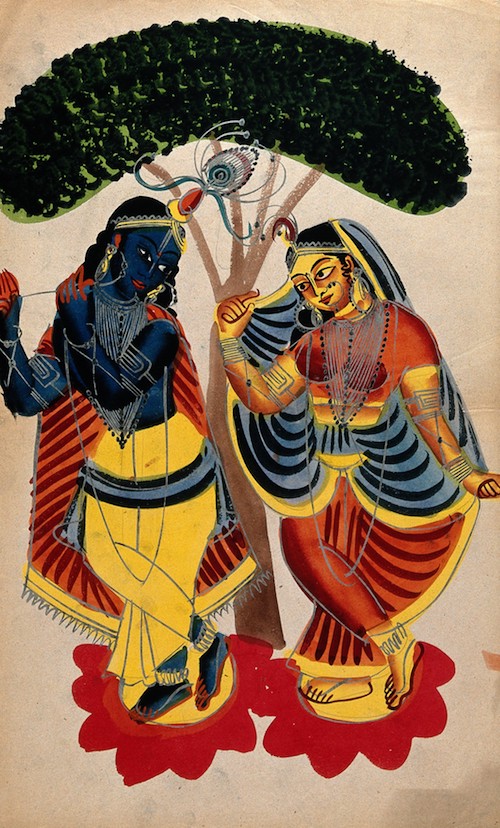
The earliest source of Krishna’s reputation as a great lover can be found in the Harivamsa Purana, which appeared as a supplement to the Mahabharata at least around 2000 years ago. Subsequently, Vishnu Purana and Bhagavata Purana, like Harivamsa Purana, also dwell on the avatar’s aspect as a sensuous lover.The role of the perfect lover adds up to Krishna’s multi-faceted personality, leading many Vedantic exponents to consider him as the complete Vishnu avatar. The Bhagavata Purana proclaims itself to be the greatest of all Puranas (Bhag. 12.13.16).
The Bhagavata mentions a certain nameless gopika who was favoured by Krishna for a time, while none of the other ancient literary sources mention Radha. This is one of the rare instances where a major deity in the Hindu tradition is not clearly mentioned. In Sanskrit literature, she appears for the first time in the inscriptions of the Paramara king, Vakpati Munja of Malwa (CE 973-94). However, the Radha-Krishna affair existed in the vernacular as folklore alongside Krishna’s other exploits and the roles he played for the upkeep of dharma.
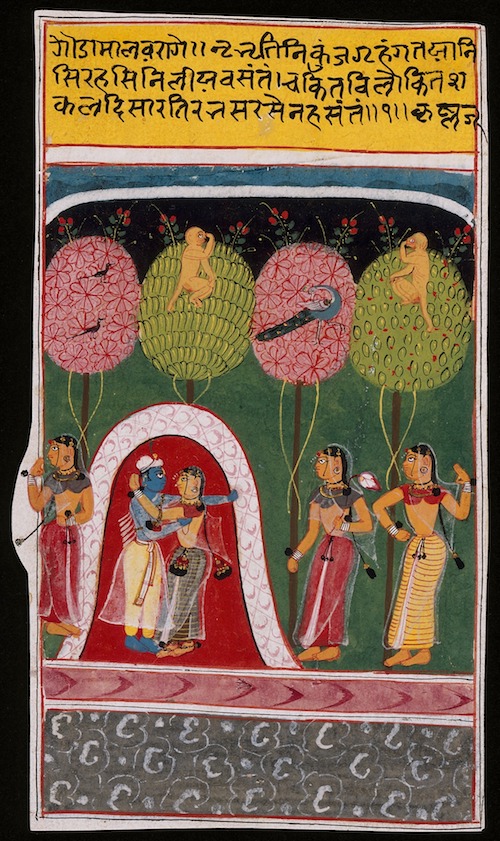
But this love affair did not make it to the classical level until Jayadeva composed Gitagovinda in the 12th century. Jayadeva broke away from past conventions and elevated Radha to a classical deity worthy of worship and described Her as an appropriate counter figure for Krishna in his role of the perfect lover, who emerges as the unquestioned central concern of His amours. Krishna was no longer a detached lover reciprocating the passion of gopis with equanimity. He suffered and agonized like Radha, in separation.
Krishna becomes complete as a lover only beside his consort, Radha. It could be argued that the Radha-Krishna affair shows very scant respect for middle-class morality and social inhibitions that define marital and familial ties. According to certain traditions, Radha was seven years older than Krishna and had fallen in love with him at first sight when he was a toddler, some claim the relationship to be illicit and so on. The apparent deviation from contemporary societal norms is a characteristic feature of the Radha-Krishna love affair that challenged conventional Hindu sentiments and continues to do so in the present times.
After Krishna left Vrindavan for Mathura, he continued to play his role as lover, fulfilling the desire of Kubja, a deformed and hunchbacked woman, eloping with Rukmini and making her his queen, then marrying more women in due course. However, the Radha-Krishna love affair is different from Krishna’s other love relationships in that one cannot miss the multidimensionality here. It is believed that Radha was Krishna’s first wife and was pointed out Bhandirvana in Vrindavan where Radha and Krishna had a Gandharva wedding in the presence of Lord Brahma himself. According to lore, in their last tryst before he leaves for Mathura, Krishna’s mesmerizing flute that erotically aroused all entities with its enchanting melody is bequeathed to Radha. He never played the flute again nor did he ever come back to Vrindavan.
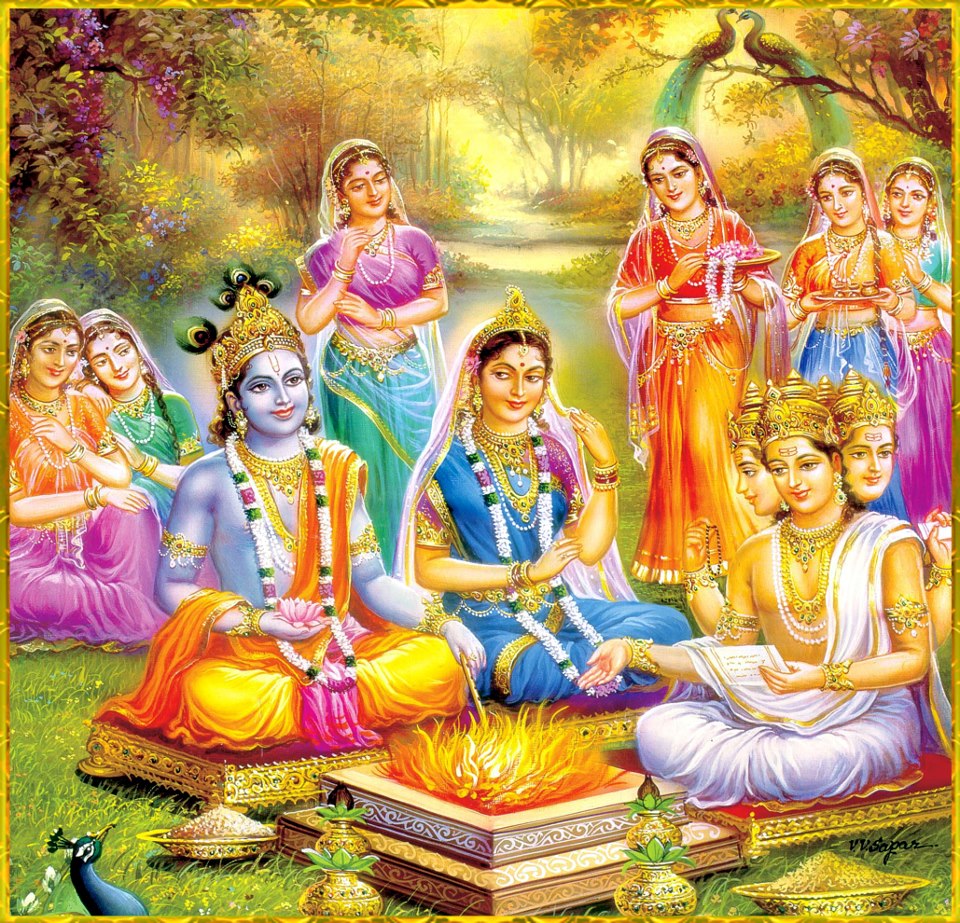 The centuries following Jayadeva were a tremendously creative period in sensuous love poetry narrating the Radha-Krishna affair; this time not in Sanskrit but in the languages of the common man, drawing on oral traditions. Chandidasa (Bengali), Vidyapati (Maithili), Surdas and Bihari (Braj) and Govindadasa (Brajaboli) presented the wide range of bold nuances in love play in the Radha-Krishna story and exhausted the whole spectrum of love covered by the divine couple.
The centuries following Jayadeva were a tremendously creative period in sensuous love poetry narrating the Radha-Krishna affair; this time not in Sanskrit but in the languages of the common man, drawing on oral traditions. Chandidasa (Bengali), Vidyapati (Maithili), Surdas and Bihari (Braj) and Govindadasa (Brajaboli) presented the wide range of bold nuances in love play in the Radha-Krishna story and exhausted the whole spectrum of love covered by the divine couple.
The Radha-Krishna tradition continued to inspire the people of India until Abrahamic sensibilities made inroads into the Hindu heartland through the missionaries and their colonial facilitators, both native and foreign. The success of the missionary campaign against the devadasi community was a mortal blow against this tradition. How lasting this turn of sensibilities was for the missionary-civilised Hindus can be discerned today by the overwhelming number of Hindus who are apologetic of the Radha-Krishna affair and who even try to bring up excuses for the sensuous story and explain away the love play as a metaphor for the mystical longing of the jivatma for the paramatma and so on and so forth. The statement is partially unfounded and displays the overwhelming degree of ignorance that has crept into modern Hindu society.
The Physical Body According to Vedanta
According to Vedanta, the knowledge of the self, the true reality, is the objective of human life that culminates in self-realization. This means self-realization is only pertinent to the human condition, of which the physical body is an indispensable element. The ‘Self’ is contextually used as the ‘Atman (Soul)’ the mind, intellect and body. The knowledge of Self begins from the physical body.
Besides being a reference point for existence, the physical body is an integral part of the material, phenomenal world composed of five elements, without which the knowledge of the self is impossible. It is the physical body that paves the way for self-realization. Vedantic metaphysics postulates that unrealized atmans go to pitruloka, where they enjoy their just deserts, but only to come back to earth as human beings pursuing the atman’s ultimate objective of self-realization. Self-realization takes place only on earth as humans, or to put it in another way, self-realization is applicable only at the level of human reality. Self-realization is neither valid nor applicable without a human body. The atman (self) takes a particular human body for carrying out its mission and is completely responsible for the body, in other words the deha (body) and the dehi (wearer or owner of the body). It is in this sense that the body is called a temple of the atman (self).
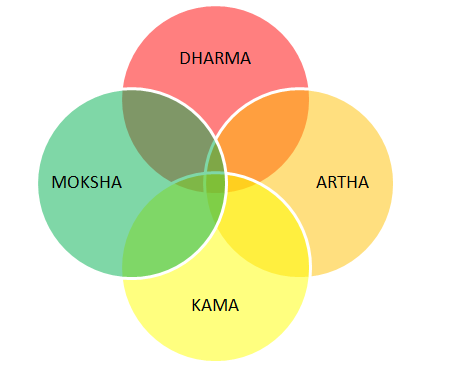 Spiritual life starts from the physical. According to Vedanta, one needs to finish with the matters of the body to advance to the next stage. One cannot aspire for self-realization without negotiating the body or independent of it. It is a futile effort to bypass the physical body to get to the spirit without coming to terms with it. Because body is a function of the mind, negation of the physical aspects of self cannot aspire to turn to Vedanta. This is the first step to ascend to the spiritual level. Generally, all Vedanta philosophical streams don’t make much of sex or physical love and some proponents even go to the extent of negating it. The reason is very simple – people turn to Vedanta only once they have negated sex and physical love. People who have physical desires need to address that first.
Spiritual life starts from the physical. According to Vedanta, one needs to finish with the matters of the body to advance to the next stage. One cannot aspire for self-realization without negotiating the body or independent of it. It is a futile effort to bypass the physical body to get to the spirit without coming to terms with it. Because body is a function of the mind, negation of the physical aspects of self cannot aspire to turn to Vedanta. This is the first step to ascend to the spiritual level. Generally, all Vedanta philosophical streams don’t make much of sex or physical love and some proponents even go to the extent of negating it. The reason is very simple – people turn to Vedanta only once they have negated sex and physical love. People who have physical desires need to address that first.
The purushartha or the four essential pursuits of human beings, as laid down by Hindu sages includes ‘kaama’ as a progressive journey. However it is the kaama that needs to be rejected for a spiritually progressive life. This seeming contradiction can be resolved easily because the latter version of kama is an aberration in the absence of dharma (adharma). The difference can be demonstrated by the example of consensual sex and rape.
Satisfaction of worldly desires in the ‘framework of dharma’ is a prerequisite for an atman before turning to moksha or self-realization. This pursuit is an episode in the life of every atman. However, the ‘purna’ (fullest/most expressed) avatar of Vishnu is beyond any man-made rule, as demonstrated by the Radha-Krishna love story. The temporal and therefore illusory social norms and inhibitions do not prevent the unravelling of the unique intimacy, clearly revealing these social interdictions to be utterly unsubstantial in the face of the everlasting values of life (Santana Dharma).
Shades of sex
Vedanta acknowledges that sexual desire is, at its core, longing for union with God [brahman]. Sex and physical love express themselves in a wide variety of ways. From the animals to the humans it can create havoc, if the urge is thwarted in its natural course. And when the unregulated or unnatural urges enter the human psyche, it sets the demonic emotions into motion. At the other end of this wide spectrum is the divine sex practised by Radha-Krishna. But both have their roots in the gross human body. In between this range, the several shades of physical love span out to cover a wide range of human emotions. An average consensual sexual relationship is said to teeter through all the three gunas or basic qualities of nature in a fluctuating wave.
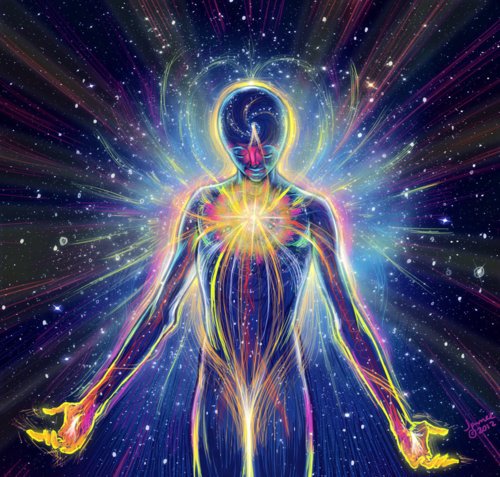 A student of Vedanta is required to rise above the three gunas equally, but for those who are still engrossed in the physical plane and have not yet turned to Vedanta, the sensible first step is to cultivate the sattvic tendency than to negate the physicality per se. And for the common people who are far away from Vedanta by inclination or custom, the correct course was inevitably drawn by the Dharma Sastras.
A student of Vedanta is required to rise above the three gunas equally, but for those who are still engrossed in the physical plane and have not yet turned to Vedanta, the sensible first step is to cultivate the sattvic tendency than to negate the physicality per se. And for the common people who are far away from Vedanta by inclination or custom, the correct course was inevitably drawn by the Dharma Sastras.
The Ultimate Sexual Union
This is corroborated by a late 16th century condensed version of the Bhagavata titled ‘Narayaniyam’ composed in Sanskrit by Melpathur Narayana Bhattatiri. The Bhagavata does not mention Radha, but by the time of Melpathur, she was already a revered figure. The 2nd sloka of the 63rd dasakam mentions that Krishna left the gopikas in the lurch and disappeared when he found that his association with them caused self-conceit in them. The 3rd sloka introduces Radha and also reveals why Krishna preferred her company.
In the exegesis (vyakhyanam) of this sloka, Professor R. Rama Varma Thampuran mentions that because of her egolessness, Radha was able to enjoy the bliss of union without the separation, whereas the other gopikas were deprived of Krishna’s presence because of their pride in their worldly self. The ultimate union of the atman and paramatman is achieved by losing the ego or the lower self that is attached to the body. This aspect introduced the adage “ek atman do sharir” (one atman two bodies) pertinent to Radha and Krishna.
Later, the unexpected farewell in Vrindavan that separated Radha from Krishna with much heartbreak is complemented by their meeting years later in Samanta Panchakam, the five water bodies that make up the Tirta in the Sarasvati drainage basin, in Kurukshetra. It predated Kuru and was a popular place of yajna for devas and renowned as the Brahmapura of the humans. Narayaniyam 84th dasakam describes Krishna’s journey to Samanta Panchakam during a solar eclipse with his entourage, all the Yadava men and women beside his wives, the Pandava princes and Draupadi. There they also meet Nanda and the gopis and gopikas including Radha.
 The ultimate union of the divine lovers takes place there. Krishna first makes peace with the gopikas, removing their pangs of separation by holding each of them to his bosom. The gopikas get instant liberation by experiencing the final union with their beloved. Then Krishna approaches Radha. He expresses his passion and puts forth excuses for his absence blaming it on the battles that had taken a toll on his time. Radha’s sorrow of separation and the bitterness she harboured in her heart is entirely assuaged by his embrace and they become one with each other.
The ultimate union of the divine lovers takes place there. Krishna first makes peace with the gopikas, removing their pangs of separation by holding each of them to his bosom. The gopikas get instant liberation by experiencing the final union with their beloved. Then Krishna approaches Radha. He expresses his passion and puts forth excuses for his absence blaming it on the battles that had taken a toll on his time. Radha’s sorrow of separation and the bitterness she harboured in her heart is entirely assuaged by his embrace and they become one with each other.
In the linear timeframe the affair with Radha is a closed episode in Krishna’s life, but at the same time it becomes a recurrent, earthly moment framed in eternity. Krishna’s flute still beckons human souls and all creatures that are born, live and die on earth. Whether we like it or not we are subject to the unique, earthly magic of love in all its sensuous variations, with its sweet joy of union and its pangs of separation. Sri Krishna and Srimati Radha, his worthy counterpart, teach us a basic lesson in earthly life: we can deny physical love but never the need for intimacy of which physical is but a part!
Transformation of Attitudes
Downgrading the sexual aspect of human life has two-fold disadvantages. One, people are denied one of the pursuits in the purusharta, the natural link of progression from the physical to the spiritual. Two, it denies physical love to those who need it. This deficiency also entails physiological and thereby psychological ill health. The suppression of natural sexual expression inevitably leads to decay and destruction of culture and ultimately of the species.
It is well known how the ‘Abrahamic type of monotheism’ destroyed the goddess worship and how its forceful dissemination of aberrant sensibilities destroyed the naturally evolved nature-worshipping religions, commonly termed paganism, and imposed a worldview insulated from natural phenomena. The alarming rates of sex crimes in India today are a direct result of the rise of the Abrahamic sensibility all over in the last millennia and the alienation of Indians from their natural moorings. Transgressions on women are unashamedly attributed to the woman and not to the man, and this injustice can be directly ascribed to the waning awareness of the divine feminine in human consciousness.
 Without Radha, Krishna is not the perfect lover. This is probably why he is considered the complete avatar, spiritualising and accomplishing a human want, which no avatar has done before. Krishna’s flute is a symbol that anchors us to earth, without which we ordinary mortals cannot hope to ascend from the temporal pleasures and sorrows to eternal bliss. Love between a man and a woman is a sacred thing in Sanatana Dharma. It is the privilege of the female to be the prime mover and the male ideal is always responsive. This is the true story narrated by the Radha-Krishna love affair.
Without Radha, Krishna is not the perfect lover. This is probably why he is considered the complete avatar, spiritualising and accomplishing a human want, which no avatar has done before. Krishna’s flute is a symbol that anchors us to earth, without which we ordinary mortals cannot hope to ascend from the temporal pleasures and sorrows to eternal bliss. Love between a man and a woman is a sacred thing in Sanatana Dharma. It is the privilege of the female to be the prime mover and the male ideal is always responsive. This is the true story narrated by the Radha-Krishna love affair.
The post Shades of Sex & The Radha-Krishna Love Affair appeared first on Dharma Today.
]]>The post Climate Change and Ancient Indian Town Planning appeared first on Dharma Today.
]]>The advanced cities of 21st century contribute to nearly 80% of all the waste that is generated by different anthropogenic activities, and constitutes up to 60% of the total Greenhouse Gas Emissions which contribute to the phenomenon of global warming as well as climate change. We are repeatedly warned again and again that the sea-level is rising twice as fast as previously forecasted while threatening hundreds of millions of people across the globe. But the threat of sea-level rise to cities is only one piece of the puzzle, extreme weather patterns such as intense storms are another. These impacts of climate change are going to be felt strongly in the years to come.
As urbanization and globalization continue apace, cities will become the front line actors in the carbon emissions and climate change arenas. The future of hundreds of millions of people living in urban areas across the world is to be affected by varied impacts of rapid urbanization and climate change. Additionally, the climate refugees from the rural areas that have been hit by drought or flooding caused by the climate change will also aggravate the migration to cities, i.e., the process of urbanization. And the overall impact caused because of all these phenomena’s would vary depending on the form of settlement, its geographic considerations and the nature of the local economy.
However, it is noteworthy to mention that the cities and urban residents are not just victims of climate change but also part of the problem. And if cities are part of the problem, that means they must also be part of any solution. Thus even if it’s clearly understood that climate plays a major role in shaping up the settlement style, the final form of the settlement pattern can also drastically affect the climatic conditions of any area.
It would be worthwhile to note that the ancient systems of town planning in India had interesting insights that seem practical even today. Let us look into some of the designs they offered.
Ancient Indian Town Planning Principles and Bye-Laws
The principles and theories of town planning in ancient times are contained in various literatures, which can be broadly classified into two types for the purpose of analysis: whereas the first category contained proper Architectural Shilpa Works (like Mansara), the second category comprised of Non-Architectural Adjuncts (as expounded in Veda’s, Upveda’s/Sutra’s, Brahmana’s, Purana’s, Agama’s, Tantra’s etc.). The nature and growth of towns then were chiefly governed by site conditions. The towns were generally situated on river banks, a flowing stream was always preferred for sanitary requirements.
Mansara Shilpashastra deals with many aspects of town planning such as study of soil, climatic conditions, topography, fixing orientation to get maximum advantage of the sun and wind, and layout of various types of town plans such as Dandaka, Swastika, Padmaka, Nandyavarta, Prastara, Chaturmukha, Karmukha.
The main or king streets were aligned in the East-West to get the roads purified by the Sun’s rays; while the short roads were aligned North-South. The roads running round the village called ‘Mangal Vithi’ were reserved for priests.
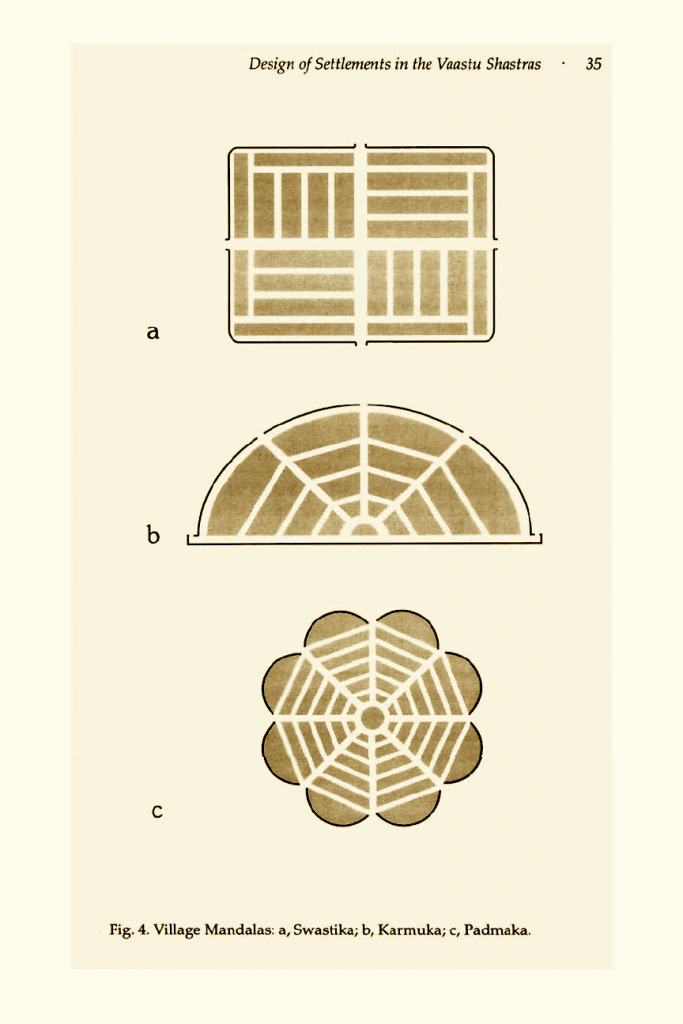 According to Mansara, the probable site for the proposed settlement was to be examined and its fitness was determined from its smell, colour, shape, direction, sound and touch. For example:
According to Mansara, the probable site for the proposed settlement was to be examined and its fitness was determined from its smell, colour, shape, direction, sound and touch. For example:
- The ground should be smooth and levelled.
- It should produce a hard sound.
- The odour of site should be agreeable when dugged to the depth of man, with his arms raised above his head.
- Temperature of site should be moderate.
- Any site which does not possess such qualities is not fit for habitation.
According to Mayashastra (another Vastu treatise),
- The ground must slope towards North-East.
- It should be fertile for all kinds of seeds.
- The earth of the site should have white, red, yellow or black colour.
- It should have a variety of tastes and should have a mixture of sand.
- A southward slope was said to bring death; south-west brought suffering; and if town is built on western slope, it would lead to war.
- The predominant wind direction in India is from SW to NE direction.
- If site slopes towards this direction, the houses will be exposed to storm and rain.
Hence such sites were rejected.
As per Mayamata, the following rule was laid to determine the strength of soil. It says to dig a pit deep in the ground and again return earth into it. If the earth fills more than the pit, the ground is good. But if it falls short, then the ground is bad and so it is rejected.
Furthermore, following were some of the building bye-laws which were adopted in ancient India:
- When a site is selected from the town or a house is to be erected on it, the layout of that town is demarcated by the ‘Sthapati’ and plots are according to certain planning principles.
- After completing the layout of town and trees, they must be planted before the commencement of building work. This is important for the scenic beauty of townscape.
- Ancient Indian houses were built around a certain court. Such houses were known as ‘Salas’. Salas meaning “a long structure of one span.” Houses of Brahmins comprised of four such spans around an enclosed central court. This is known as ‘Chatursala’. The house of Kshatriyas were the ‘Trisalas’ occupying three sides of a rectangular plot. Similarly, there were ‘Dwisalas’ for Vaishyas and ‘Eksala’ for Shudras.
- The Height of building was related to width of the roads. This helped to control the elevation of buildings along a street, to maintain uniformity.
- Individual house buildings were not permitted to deviate from maximum dimensions laid down by buildings of different ‘Varnas’.
- Houses shall have plinth which are above street levels and shall be furnished with verandahs or ‘Alianda’. From the plinth to ground level a flight of steps shall be provided.
- A ‘Vedika’ or raised seat were provided on both sides of entrance road to the house.
- Footpaths or ‘Vithikas’ were provided on either side of the road and paved with hand material such as stone slabs.
- Storm water drains were present on both sides of the street.
- Mansara states that footpath should be raised above the street level.
- All houses should face the royal roads and at their back, should run narrow service lanes.
Different Village Forms as Mentioned in ‘Mansara’
Mansara classified villages into eight types according to their shape, method of street planning, temple planning etc.
- A) DANDAKA: This village form follows a ribbon development along principle street. It consisted of five long parallel street running East- West with three shorter ones intersecting them at the middle and two ends.
There were two bathing tanks in the Northeast and Southwest corners and temples out of which principle one was placed at the west end of king’s street called rajpath. Minor deities and their temples were on the outskirts of village. The fortified wall had four gateways facing the two main streets. In the given plan each of inside plates had two rows of houses.
- B) SWASTIKA: The plan resembles the pattern of a swastika. Two main streets run East- West and North- South in the middle. The branch streets shall follow pattern of swastika. The wall was fortified with provisions of missiles. The magic of swastika lay in the fact that it was a formation used to defend the four gateways.
- C) PADMAKA: The shape of Padmaka may vary but length and breadth needs to be equal. The plan had two main roads in the East- west and North- south direction. It had a temple at the centre and palace, shops, market and tank spreading around the periphery of the plan. Mansara states that the length and breadth of this village shall be the same and could be enclosed by circular, quadrangular, hexagonal or octagonal walls.
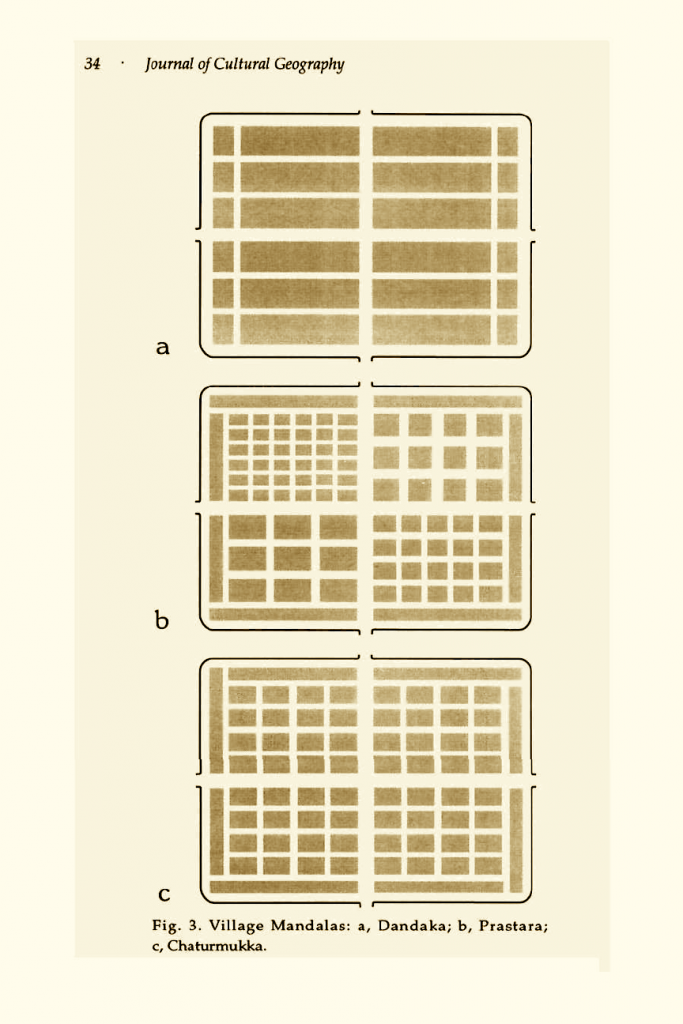 D) CHATURMUKH: The village was square or rectangular in shape with two main streets in the East- West and North- South directions. As the name suggests it had four main gateways at the end of streets. The Shudras resided in extreme borders; the temple being at the centre of the plan.
D) CHATURMUKH: The village was square or rectangular in shape with two main streets in the East- West and North- South directions. As the name suggests it had four main gateways at the end of streets. The Shudras resided in extreme borders; the temple being at the centre of the plan.- E) PRASTARA: These were more developed Vedic settlements. The main streets were in North- South and East- West direction which divided the city into four main parts each part having narrower streets than the main one.
The city was enclosed in walls and there were four gateways at cardinal points. For example, the city of Jaipur.
- F) KARMUKHA: The shape of the city resembled a bow. The city had wall enclosure in the form of a bow having two main gates on the North and South sides. It had one main road lying in the North- South direction. Outside the city wall was a moat (deep and wide water filled ditch) for defence.
- G) NANDYAVARTA: This plan was in the pattern of flower petals. This was known as the abode of happiness. This plan was intended to accommodate a population of mixed social grades. Nandyavarta type of village contained a great number of shrines dedicated to various deities for location of which Mansara has given directions. There were bazaars placed on outer blocks near gates.
- H) SARVATOBHADRA: at the centre of village was a temple of Shiva, Vishnu or Brahma. The village had two streets crossing each other at the middle. Rest houses for pilgrims and educational buildings were at the outer rings of village.

 Vaishyas and Shudras resided at the Southern part. The temple of Chamunda Devi was erected at North- East side. The village was protected by a wall and ditch. The principle streets were purified by rays of Sun from morning to evening.
Vaishyas and Shudras resided at the Southern part. The temple of Chamunda Devi was erected at North- East side. The village was protected by a wall and ditch. The principle streets were purified by rays of Sun from morning to evening.
Conclusion
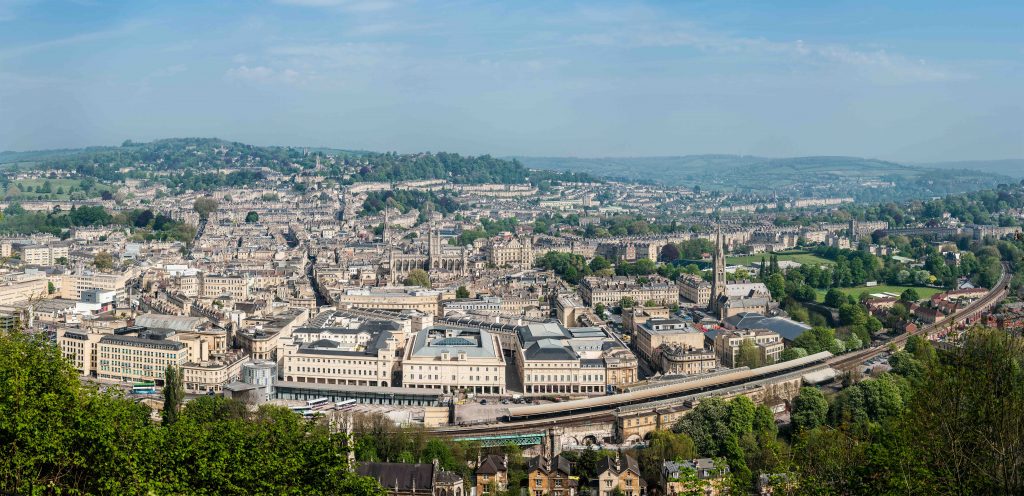 Planning, in general, can refer to the planned and optimal use of any and all resources. Nowadays, the planning, development and management of human settlements is becoming an increasingly important task. As a result of technological advancements and integration of societies and economies of the world, planning of cities and regions has become very complex. Professionally trained planners are therefore needed in order to evolve new options for the development and management of human settlements, which isn’t only limited to the metropolitan areas but also to small cities, towns and villages. And as settlement planning and management remains a fundamental property of intelligent behaviour, this obviously requires the study of history in order to omit the previously committed mistakes & to gradually learn from them.
Planning, in general, can refer to the planned and optimal use of any and all resources. Nowadays, the planning, development and management of human settlements is becoming an increasingly important task. As a result of technological advancements and integration of societies and economies of the world, planning of cities and regions has become very complex. Professionally trained planners are therefore needed in order to evolve new options for the development and management of human settlements, which isn’t only limited to the metropolitan areas but also to small cities, towns and villages. And as settlement planning and management remains a fundamental property of intelligent behaviour, this obviously requires the study of history in order to omit the previously committed mistakes & to gradually learn from them.
The post Climate Change and Ancient Indian Town Planning appeared first on Dharma Today.
]]>The post Caste & Conversion – A 21st Century Version of Colonial Conspiracy – Part 1 appeared first on Dharma Today.
]]>A ‘Real World’ Hate Crime Scene
The hate-crime scene had been set. His co-conspirators were also prepared, having been briefed in the dark corners of the palace, having been given ample opportunity to prepare their own ammunition and choice of weapons and having been briefed on the strategy itself. They too took up their places to both help prepare the minds of the gathering and also to launch their projectiles in support of the impending assault. At a time of tranquillity, in a setting when the assault was least expected, he deployed his lethal projectile and at his signal. His co-conspirators launched their volleys in rapid succession, raining down a hail of hatred upon the wholly unsuspecting victims.
Once the weapon had been deployed and the assault completed, the settling emotional and intellectual dust revealed three casualties – every Hindu ever born (including my children) and yet to be born had been injured, the reputation of all British Hindus lay slaughtered, and the dignity and reputation of the institution itself as a seat of “evidence based debate & reasoning” had been, in the eyes of all rational observers, crucified.
The masterful assailant who executed this act of religious persecution, was Baron Lord Harries of Pentregarth, former Bishop of Oxford. The scene was the British House of Lords. The devastating weapon, a favourite of centuries of Hinduphobics and other spiritually corrosive “assassins of indigenous traditions”, was the word CASTE. “
The Anatomy of the Hate Crime
On the 5th March 2013, a debate was underway in the Upper Chamber of the British Parliament. A debate on the Governments proposals concerning Business and Enterprise. It was a dry and business like subject, one which hadn’t drawn particularly significant interest from outside of the House. But it was a debate that was well attended and was important for the Government to see successfully concluded.
Lord Harries of Pentregarth stood to participate in the debate and introduced what has since become commonly known as the “Lord Harries Caste Amendment”. In the hour that followed, in a performance worthy of the best of Shakespearean actors, Lord Harries demanded, pleaded, cajoled and implored the gathered Peers to rush to act and to protect 480,000 of her Majesty’s subjects who did not have the protection of the Law and suffered on a daily basis.
Lord Harries demanded that the word Caste be swiftly added to the list of “protected characteristics” already included in the Equality Act of 2010, i.e. Age, Disability, Gender reassignment, Marriage and civil partnership, Pregnancy and maternity, Race, Religion or belief, Sex, and Sexual orientation.
What followed was a masterful execution of “vilification and denigration by association”, co- ordinated with generous helpings of entirely unjustified indignation, self-righteousness and the unrelenting flagellation of the British Hindu community. With manipulation and orchestration worthy of Machiavelli, clothed in cloying false piety, Lord Harries skilfully and deliberately misrepresented data, which if true, branded 50% i.e. 1 in 2 of all British Hindus, as being guilty of being born prejudiced, perpetrators of discrimination on a daily basis.
The baton was eagerly taken up by Lord Inderjit Singh, who deceitfully and in a manner of betrayal reminiscent of the quintessential traitor Raja Jaichand, brought shame to both the Sikh and Hindu tradition by abandoning Satya, “Reality” in a thinly veiled act of religious persecution.
This perfidy was achieved by misrepresenting the fully humanist teachings of the oldest scriptures of humanity, the ancient Vedas. In a speech which brought shame to the memory of Guru Teg Bahadur (Tyagi Mall) revered by Hindus and Sikhs alike, Lord Singh wielded hearsay and religious prejudice itself in successfully connecting Lord Harries’ unevidenced, fabricated deluge of Hindu crimes directly with the Hindu scriptures, completely avoiding the inconvenient truth that over 90% of the cases referred to in the report being contemptuously brandished under his nose by Lord Harries, named his own Sikh brethren and their institutions as guilty of the self-same charge.
In a parade which called longingly to the glory days, when Bible brandishing Anglicans delighted in pouring contempt on Pagans and Heathens alike from their elevated pulpits, Baroness Lady Thornton, who co-sponsored the amendment, pronounced: “Studies confirm the caste system exists in the UK, with over 850,000 people affected”, not for a moment feeling the need to consult census data or evidence.



Lord Deben called to a mythical imaginary past, populated by those Anglican British saviours who had magnanimously passed legislation to protect non-whites while the former Bishop of Oxford, was that day standing as the saviour of the downtrodden brown folk of India, the so called “Dalit” community.
Lord Harries basked in the glory of being the Saviour to whom the community, whose largely converted Anglican descendants and their Anglican co-religionists, had turned in despair. With arms outstretched, they beseeched his Lordship to free them from the shackles of the notoriously discriminatory British Hindu community with its abhorrent Hindu caste system, or so everyone was led to believe.
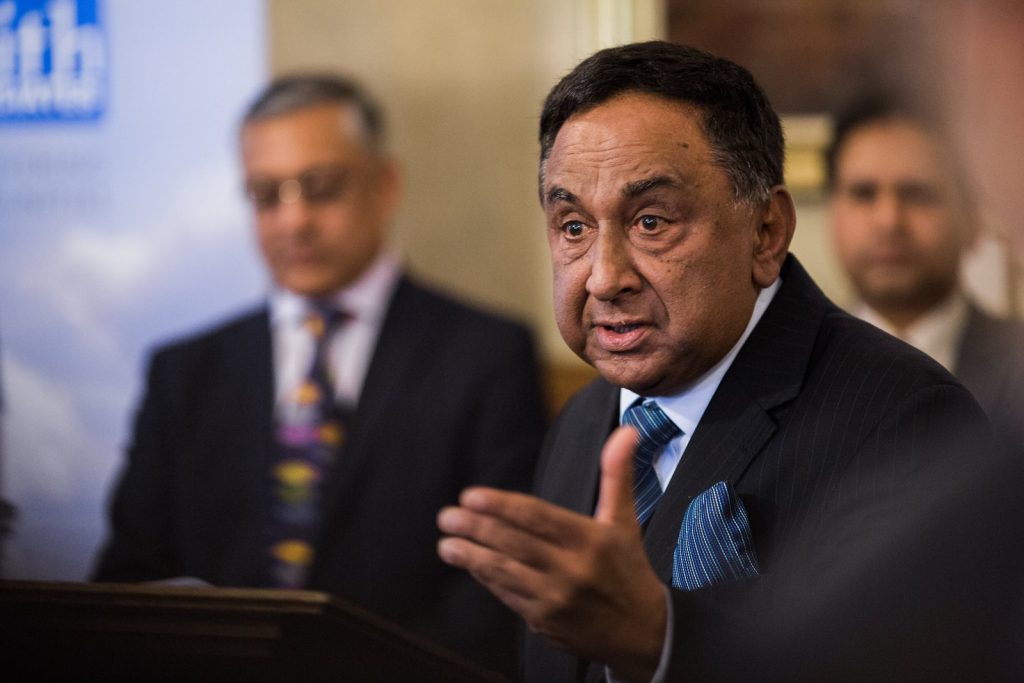
An honourable Lord of Pakistani descent, Lord Sheikh launched into a further targeted act of Hinduphobia, whilst completely overlooking his own traditions’ ongoing genocide of minority communities, a tradition which has seen Christian, Sikh and most noticeably Hindus, ethnically cleansed in multiple acts of genocide, in both Pakistan and Bangladesh, in even this decade. In the spirit of public service both Lords Deben and Baroness Flather, flamboyantly prideful in their air of Lordly infallibility and supremacy, concluded by pouring scorn and contempt upon democratically elected representatives and the religious leaders of the British Hindu Community.
The remaining Peers bathed in the joy of their most rejuvenating and nourishing pastime, shouldering Kipling’s ‘White Man’s Burden’ and saving the British Hindus, the dark skinned heathen of the 21st Century, from the ravages of their uncultured unbridled passions and prejudices.
The members of the Lower House led by Labour MP Virendra Sharma, a few weeks later regaled their audience with tales of woe and sorrow, tales which inconveniently conflicted with the grass roots experience and personal evidence of many MP’s, critically even those from the most Indian of constituencies, and which conflicted also with my own experience of having lived in this country for over 50 years.
Lord Harries’ assault reached into the very heart of my home and disrupted the tranquillity of my family and my community, it cast a cloud over my children’s future, British children born in Ascot and educated in British schools in Berkshire, and fully decent gentle members of our British community.
The Official Statistics on Hindu Community in England
As a member of the British Hindu community that with only 2% of the population, contributes 6% of GDP, has the second lowest rates of arrest, trial or imprisonment at 0.5% i.e. only 421 Hindus in prison nationally (after British Jews’ 0.3%) I was stunned to learn of this allegation against us.
According to the United Kingdom’s Office of National Statistics, of all ethnic minorities in Britain, the British Hindus had the highest rate of economic activity in 2011 whilst suffering disproportionate levels of institutional prejudice and discrimination. Scholars state that the Hindu community in the United Kingdom, and Europe in general, has consistently faced discrimination in immigration policies adopted by the local governments.
In local councils, construction or expansion permits for Hindu temples and community centres have been turned down for years, while Muslim mosques and Christian churches have been approved by the same councils and built.
Nearly 50% of Hindu children, both boys and girls, in British schools have reported to being victims of bullying for being Hindu and their religious heritage.
To emphasize the level of discrimination, the recent much publicised Hate Crime policy, focussed entirely upon the Muslim and Christian communities on all the 40+ pages, with no mention of discrimination to the Hindu, Sikh and other non-abrahamic traditions a single time!
All of this and yet, with NO reliable evidence, no social impact analysis, no public consultation and no genuine participation from the targeted minority community – how was it possible that such a Hindu phobic amendment had found its way to the floor of the House of Lords?
The impact of this legislation, the unrestrained hatred towards and denigration of my minority religious community and also the torrent of pain being expressed by so called “Dalits”, all caused me to stop, dumbfounded in my tracks. A detailed review of the process which climaxed that day in the Lords, uncovered even more deeply troubling and wholly unexpected revelations.
In today’s sadly not so Great Britain, a Britain where in 2016
- a Labour Prime Minister, Tony Blair, has been condemned in the strongest of terms for initiating an illegal war, amidst calls for him to be tried as a War Criminal,
- where a Chief Constable is on record as declaring that there are probably in excess of 750,000 paedophiles inflicting incalculable harm upon vulnerable citizens at this very moment,
- where the latest report reveals that in excess of 50% of all girls are sexually harassed in schools,
- where surveys have indicated that 1 in 3 of the indigenous British population are racist,
- where we are now on the 4th attempt to conduct an Enquiry into the INSTITUTIONALISED sexual abuse of vulnerable adults and the wholesale grooming of Hindu, Sikh and White young girls spanning a period of 30 years,
- where the Church of England is on record as admitting that it has repeatedly failed to protect vulnerable children entrusted to their care,
- where the Archbishop of Canterbury has accepted that sexual abuse, Bullying, Sexism and Racism are rife and are systemic problems in the ‘by law established’ Church of England,
- where Parliament has been rocked by a succession of scandals concerning abuse and bullying…
How on Earth was it possible, in the midst of all of these devastating social and religious challenges, with so much work for decent Parliamentarians to deal with, that the British Hindu community would be been singled out for such generous attention and be targeted for such an insidious corrosive assault?
The Labour Party, the traditional darling of all British Indians, was approached but in response, they deployed the ultimate ‘weapon of mass compliance’ (traditionally very sparingly used as a coercion of last resort, used only to force MP’s to toe the party line despite their own assessments). The draconian 3 line Parliamentary Whip itself was summoned to ensure that this legislation was passed, carried on a wave of indignant self-righteousness, without detailed Labour party scrutiny nor consultation with its Hindu community representatives, and yet there was no reliable evidence to support the dire need nor the desperate urgency, merely Lord Harries’ masterful manipulation of the Parliamentary process.

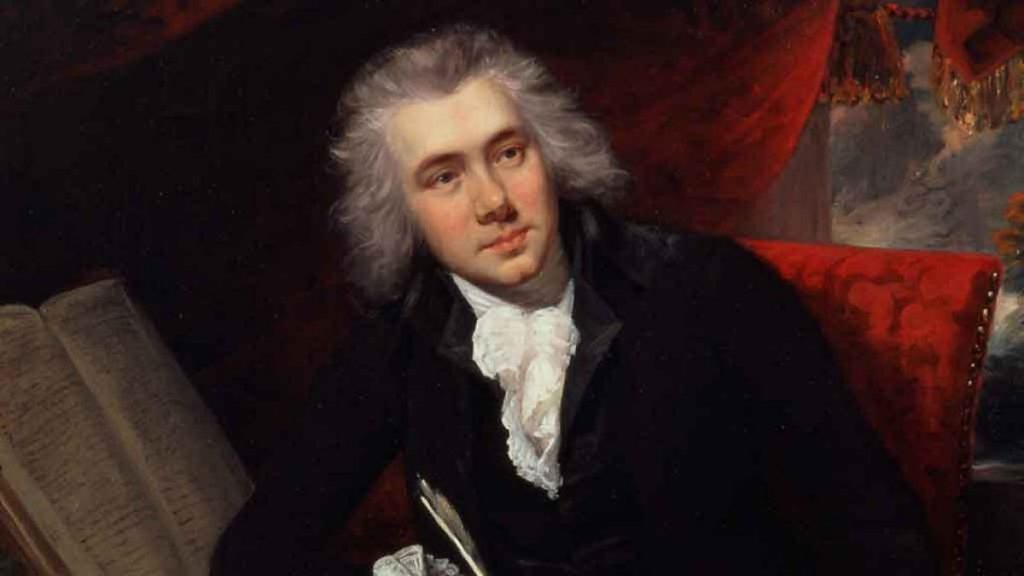 The famous Anglican fundamentalist Wilberforce, in 1813 addressed the Commons saying “Our religion is sublime, pure and beneficent, theirs (the Hindus) is mean, licentious and cruel.” Whilst James Canning standing tall on the Anglicans belief in their own superiority, told a gathering of Hindus, “You are all a parcel of poor ignorant semi barbarians, you do not even understand your own language and system as well as we enlightened Englishmen who have been at regular Grammar schools…” All whilst Bishop Heber was crafting a hymn chanting “The heathen in his blindness, bows down to wood and stone…can we whose souls are lighted with wisdom from on high, can we to men benighted, the lamp of life deny”? Judging from the words of Lord Deben, one has to ask whether the ‘racist orientation of old’ of the House of Lords, with its assumed superiority over even grass roots community organizations, is still alive and well, thriving and active covertly if not overtly. Has so little changed in the Upper chamber in over 200 years?
The famous Anglican fundamentalist Wilberforce, in 1813 addressed the Commons saying “Our religion is sublime, pure and beneficent, theirs (the Hindus) is mean, licentious and cruel.” Whilst James Canning standing tall on the Anglicans belief in their own superiority, told a gathering of Hindus, “You are all a parcel of poor ignorant semi barbarians, you do not even understand your own language and system as well as we enlightened Englishmen who have been at regular Grammar schools…” All whilst Bishop Heber was crafting a hymn chanting “The heathen in his blindness, bows down to wood and stone…can we whose souls are lighted with wisdom from on high, can we to men benighted, the lamp of life deny”? Judging from the words of Lord Deben, one has to ask whether the ‘racist orientation of old’ of the House of Lords, with its assumed superiority over even grass roots community organizations, is still alive and well, thriving and active covertly if not overtly. Has so little changed in the Upper chamber in over 200 years?
Who Created the Modern Version Caste System and How
I wondered about the consequences to Interfaith when it became common knowledge, that the Caste system which Lord Harries was railing about, was itself an official creation and imposition of white Anglican Colonialist missionaries. There were indeed then, as now a very small minority of decent men, who abhorred their own creation seeing its destructive effect, whilst continuing to impose it.
The Lords did not refer to the annotation made by the white Anglican ML Middleton “We pigeon holed everyone by caste and if we could not find a true caste for them, labelled them with the name of hereditary occupation. We deplore the caste system and its effect on social and economic problems, but we are largely responsible for the system we deplore. ML Middleton, ICS, Superintendent of the Government of India, in the Census 1911 Report for Punjab and Delhi (Vol. 15, Part I, p. 343).”
Lord Harries, graced with the mantle of academic rigour associated with a Dean of Kings College, moulded in scholarship by Selwyn College Cambridge, and a Gresham Professor of Divinity, can be expected to know what most informed Hindus know, that amongst the educated Hindus it is accepted that the Anglican plunderers, known romantically as “Colonialists”, created the modern day caste system in India. In doing so in India, the social engineers of the Anglican Church were recreating the horrific power structures which they, as the religious and moral force in Victorian Britain, had also created in Britain and successfully inflicted upon the British population in the 18th and 19th centuries.
And here in the 21st century, an Anglican Bishop was once again, blackening whole swathes of a minority British community, using the same philosophy, only this time he was bringing home one of Colonialist Britain’s most successful exports, the concept and ideology of Caste.
“The British colonial administration supported and sustained, she argues, the caste system because it echoed the subtle and deeply entrenched social hierarchy already prevalent among the British themselves. Subsequently, the colonial state deliberately raised the caste consciousness of the sepoys of the Bengal army, encouraging Brahmins among them to regard themselves as elite and to become more particular about the preparation and eating of their food. Doniger has noted that the notions of caste, which in India had traditionally been relatively fluid and secondary, became rigid because the sepoys were made to understand the caste as being central to their notions of self identity and respect. Subsequently, the idea that the caste is the basis of the Indian social order and that to be a Hindu is to be a member of a caste became a dominant colonial axiom (Doniger 2009).
The answer to the question “Who created the Caste system?” is that the Anglican Jihadis of the British Raj created the Caste system. The Church of England is both responsible for its existence and to be held accountable. Are they also responsible for manufacturing the concepts of untouchables, dalits, etc?
The post Caste & Conversion – A 21st Century Version of Colonial Conspiracy – Part 1 appeared first on Dharma Today.
]]>The post Jati as a Practical Economic Model, Not an Oppressive One – Dialogue between Rajiv Malhotra and R Vaidyanathan appeared first on Dharma Today.
]]>Professor R Vaidyanathan: You brought up this interesting issue of the Jati system. I’ve always maintained two or three important things in this.
First thing is, when we talk about Jati, it doesn’t mean we talk about Caste discrimination. These two are totally different things. People immediately jump and then, second is I think you’ve been writing also you know quite well that this whole idea Caste is taken for Portuguese language, prior to this we were not having it. It was not hierarchical, it was made hierarchical with the British in order to suit their own idea of how India should be viewed because they have this in the Government service in Britain, the A, B, C, D classification, so which is one. If I recall correctly, in 1881, the first to Census, brought in this whole idea of Caste enumeration and hierarchically bringing it. If my numbers are right, some 1300 and odd castes were listed at that time. In 1881, first Census of India, prior to this there was no regular census.
Rajiv: But Jati was different.
Prof: But they…
Rajiv: …they turned in to castes. So how is Jati economics?
Prof: So that’s what they did and you know that very interesting, In 1881 census, there were quite a number, nearly 100 plus were one-member castes. Only one member claimed under. And then they decided, Based upon their own idea, how to make it hierarchical. Till then there was no idea of hierarchical because there is a huge churning that is always taking place. What we consider today as so called lower-groupings in the communities, they became in the higher-grouping in the communities and vice versa. If you for instance, talk to lower-grouping they will never recognize themselves as lower-castes. They will say we were Kings.
Rajiv: But still I am trying to get what is the economic purpose of the Jati?
Prof: Actually what has happened is we have an uncanny ability to deride anything on which we can leverage. If you look at, I use the word caste itself, significant amount of economic progress in various clusters, there are some 870-900 defined clusters of economic activity in the country. Not Bombay, Delhi type of thing, there is Tirupur, there is Sivkashi, there is Morbi, there is Punjab. So like that various places. All of these clusters are thriving economic activity and boom centre and almost all of them are caste based structures.
Rajiv: Not the upper castes?
Prof: No! Not at all.
Rajiv: Okay! That’s important.
Prof: Including the schedule castes. I have seen in Agra and other places. It facilitates in several ways. One is, risk mitigation for instance.
Rajiv: Ok, so now we have started the real point. First benefit of caste is risk mitigation.
Prof: If suppose somebody fails, other don’t look down upon him as a failure or anything. They go and help him.
Rajiv: Do they support each other?
Prof: Yes. They support each other.
Rajiv: So it is an economic club.
Prof: Yes. Credit is made available without much security or paperwork because they know that there is a caste pressure on him to repay. It’s more a question of honour, not rule. It is more relationship based. We are a relationship based society, not rule based society. Relationship based society has got ideas of concern about fear of God, more than fear of love. The urban people in India, the middle class and merchant banking groups, they don’t have a fear of God.
Rajiv: So is it like a chamber of commerce?
Prof: Sort of. You can call it.
Rajiv: There is a chamber of commerce of people who are in one industry or another industry.
Prof: Yeah, I accept this chamber of commerce what we loosely call, ‘suited-booted-tied’ people. These people don’t have any of those type of things. They are mostly dhoti-clad, pan chewing and they do not even speak English.
Rajiv: But what is the secret to that they say we’ll be a club, we are all fisherman or we are all growing the same thing, we are not competing against each other, so what is the secret to cooperation not competition.
Prof: Secret to cooperation is because their view of the world in terms of business is, the opportunities are so large. So there’s no need for cut throat competition. The other thing is also very interesting, that is an opportunity to take over the activities of another caste person from the same location in Tirupur. I was talking to him why he did not grab it? He said no sir that is not normally done.
Rajiv: So they will not do hostile takeover? They will not try to wipeout the competitor.
Prof: No. He says it’s not required.
Rajiv: It’s not within the honour?
Prof: It’s not within the honour. It’s much larger opportunities and other thing. They don’t operate on ‘greed is good’. No! They don’t operate on that. They accumulate wealth and then they share it. Very important. Many of them have told me, the greatest of character of Mahabharata is Karna. Not Arjuna, not Krishna. For the simple reason, he shared. So, that is what we should do. Our life is short. I think we have to understand this whole groups’ approach toward the business and activity is totally different.
So, risk mitigation, credit, market access – these are the benefits of Jati.
This system also encourages youngsters. For instance, the Patel’s who started the Motels in the western coast of US. Practically, they have captured the entire motel business. They have encouraged large number of people of their own community.
Rajiv: Yeah. If you are a Patel, they’ll set you up. They’ll get you a motel. You are in business.
Prof: Correct. Or you go to this Antwerp, a small group of people, Jains actually, they are called Malankar Jains, they are a very small group but they have captured the diamond business in Antwerp. As a closely knit When I was visiting Brussels, some hotel had this Jain food counters. So I was puzzled. Why Jain food? Vegetarian food is okay but Jain food. Since the customer base is like that. To an extent, Wall Street Journal wrote an interesting article because the Jews had 70 percent of the diamond business in around 1970’s-1980’s. Today, these people(Jains) have 75 percent of the business. So, Wall Street Journal wrote a very interesting article, first time, the Jews have been defeated without violence. That’s the most important part of the story. Again they have operated as a very small cluster or a group. Very important is Caste is a good cluster to leverage on it.
The post Jati as a Practical Economic Model, Not an Oppressive One – Dialogue between Rajiv Malhotra and R Vaidyanathan appeared first on Dharma Today.
]]>